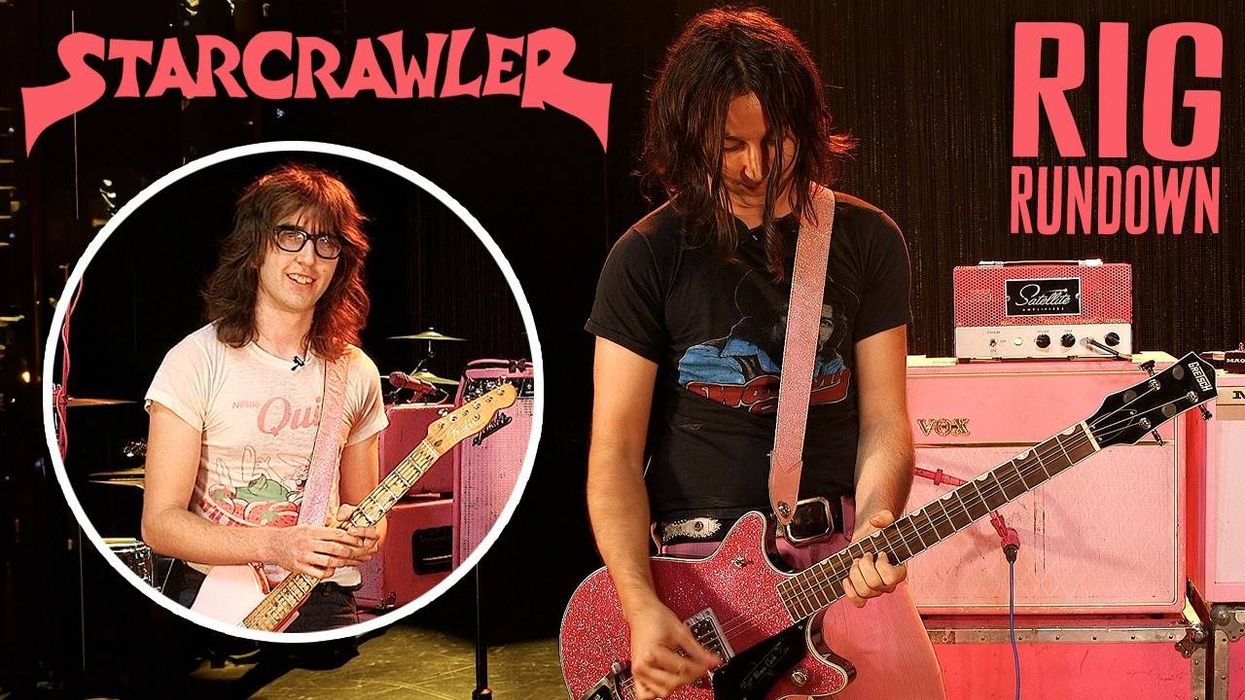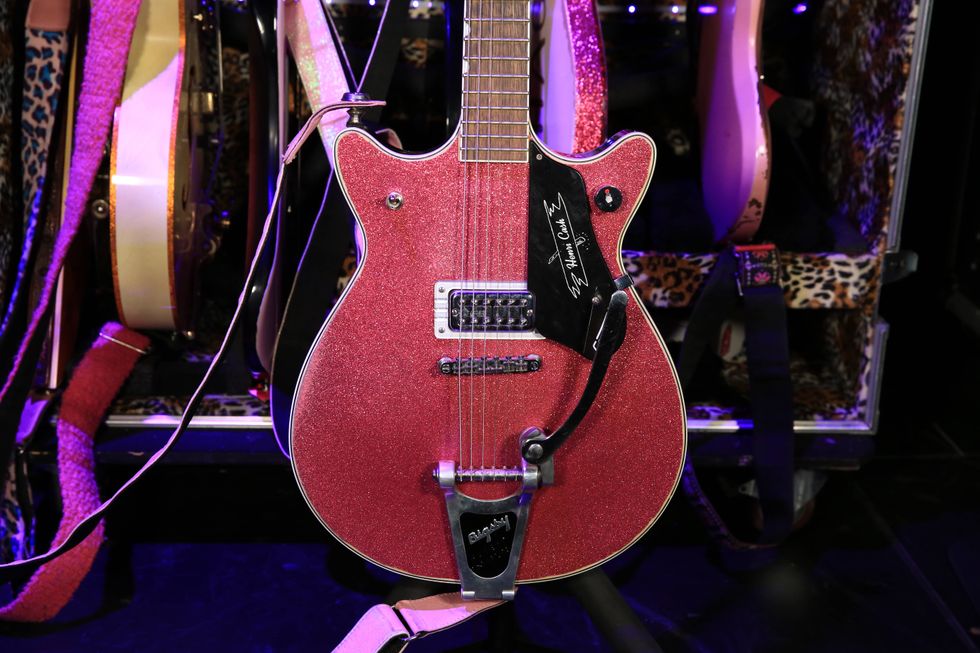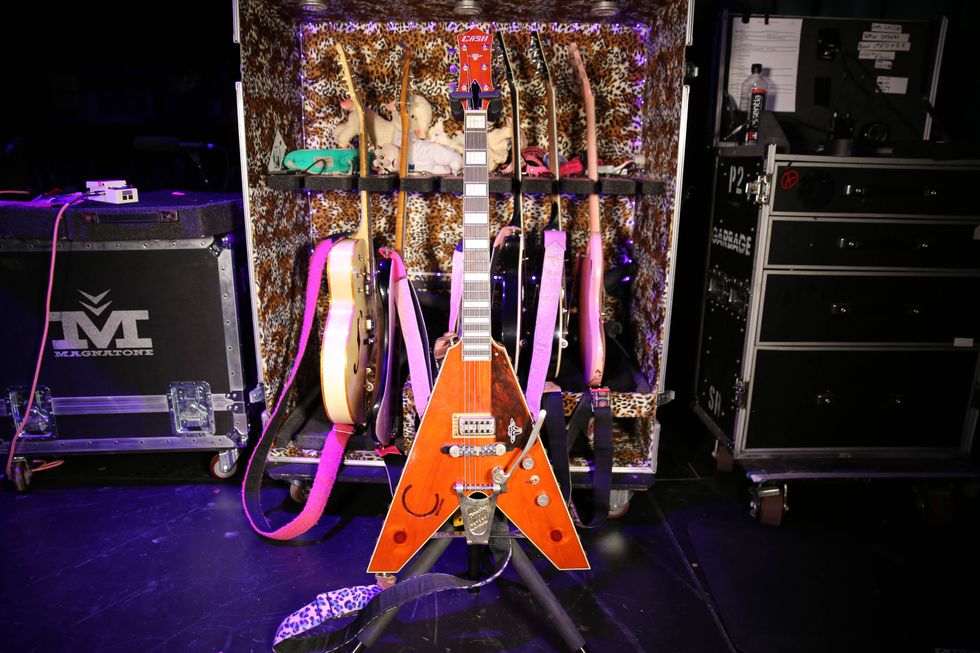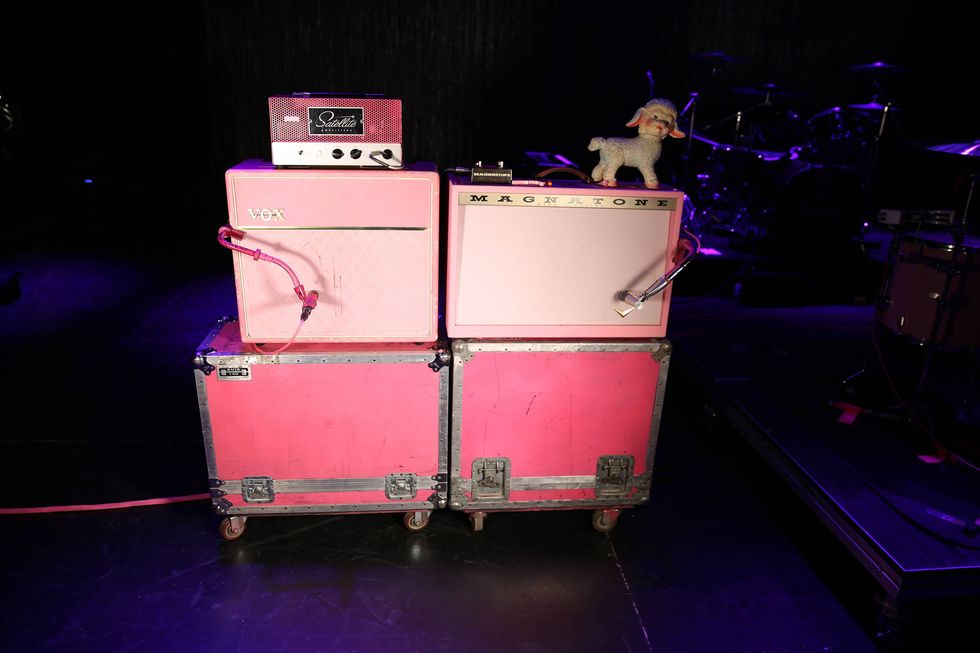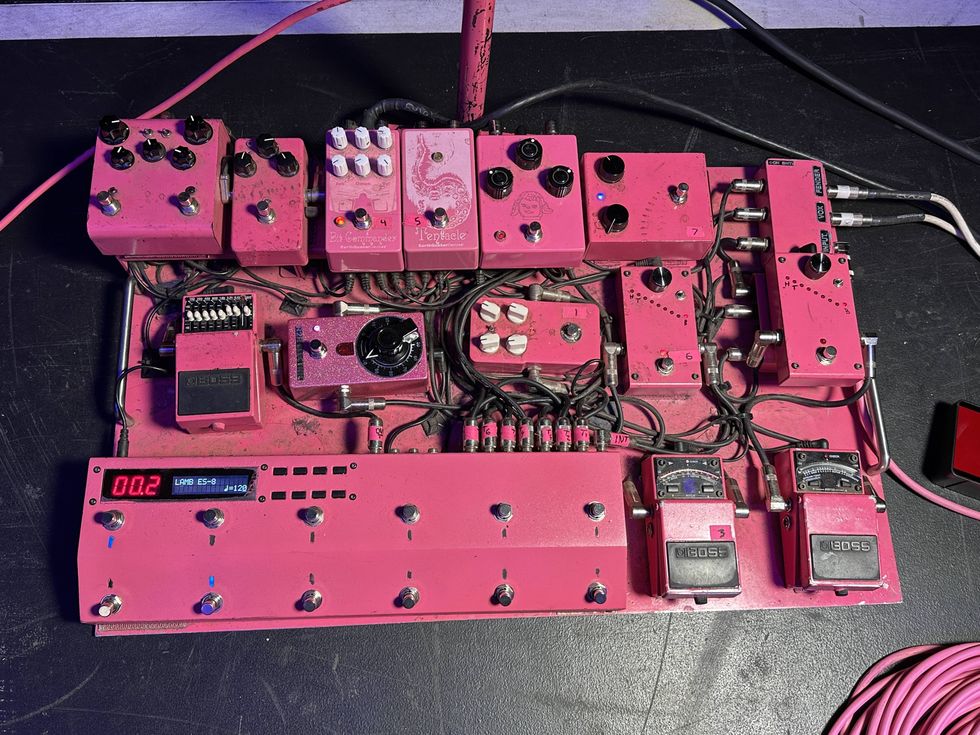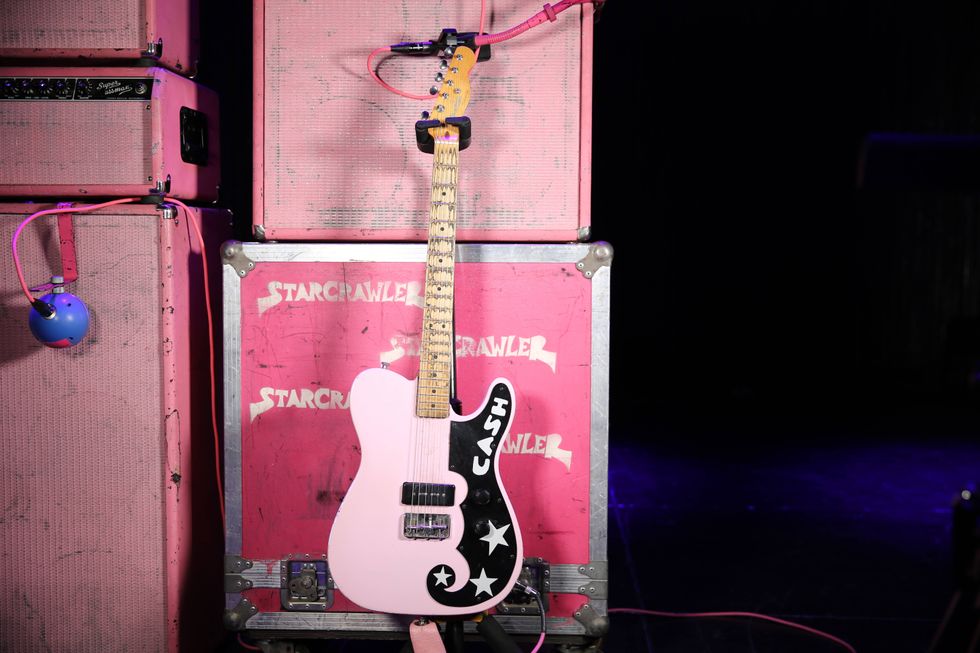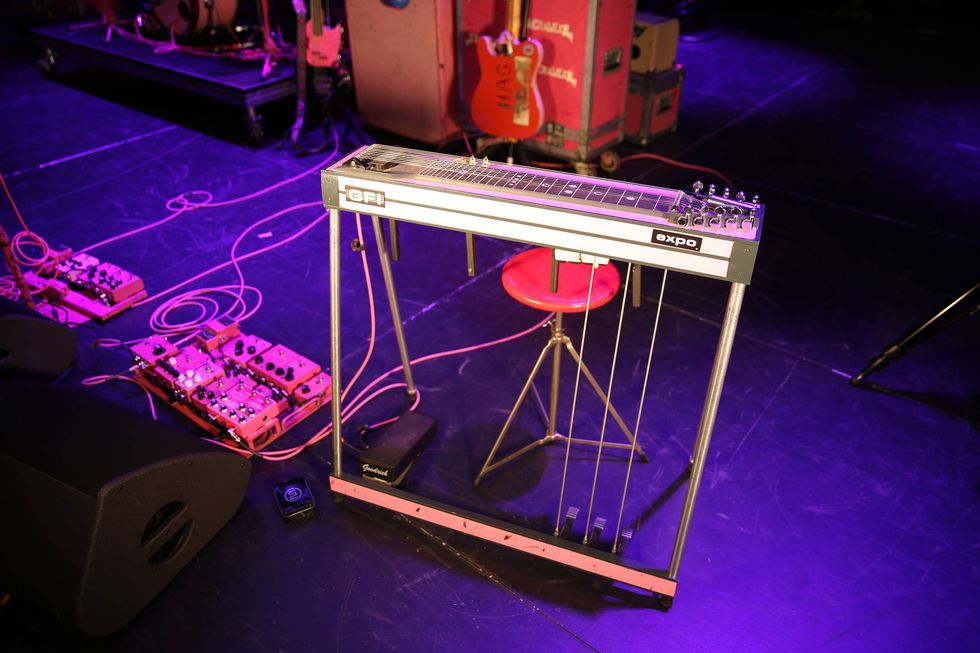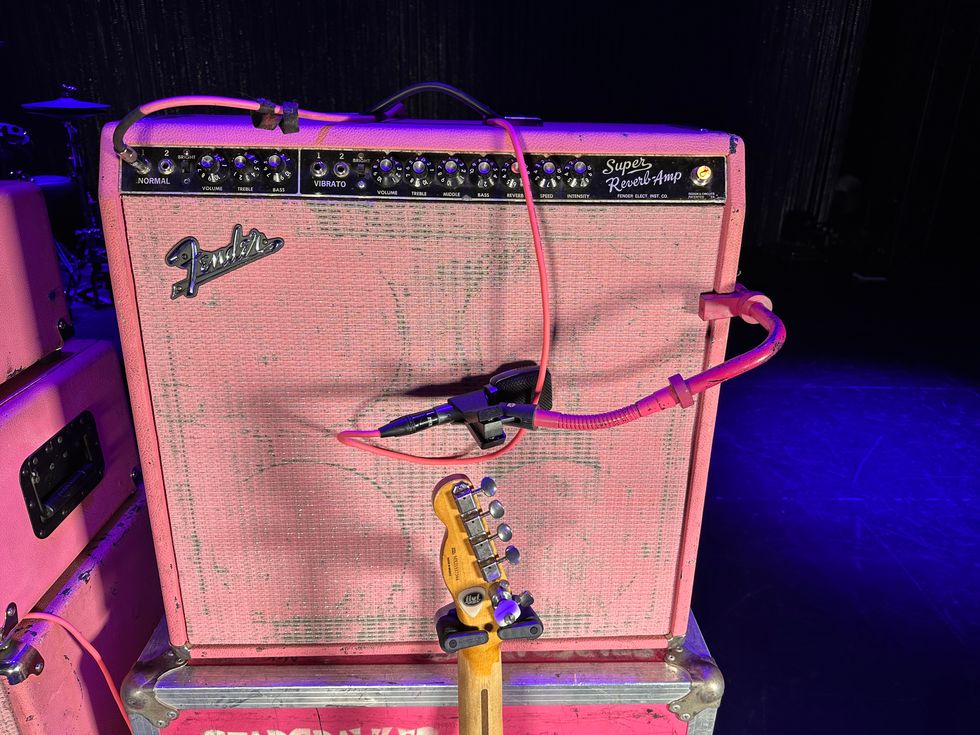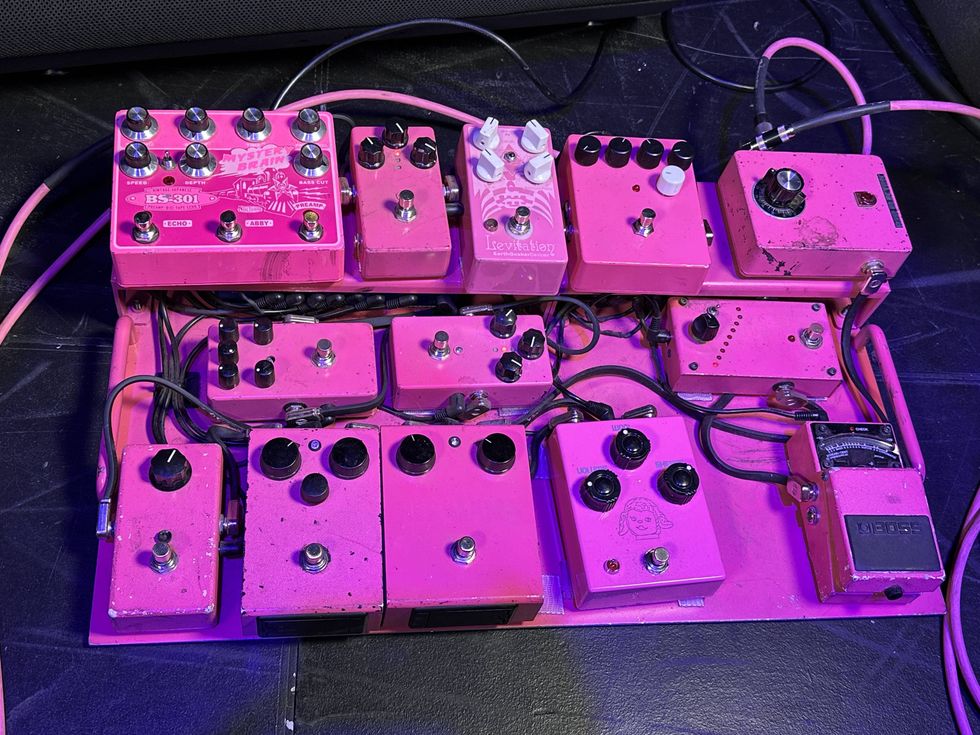Stuart Duncan, Viktor Krauss, and JD McPherson from the Raise the Roof touring band raise the curtain on their road gear.
Fourteen years after their Grammy-winning debut, Raising Sand, Robert Plant and Alison Krauss followed up with Raise the Roof—which was nominated for three more Grammys. Now on tour, the duo also has a new band that includes bassist Viktor Krauss, guitarist JD McPherson, and utility player Stuart Duncan. But before they hit the road, Krause, Duncan, and McPherson—and their techs Paul Ackling and Kevin Devogel— invited the PG team to a rehearsal at Soundcheck Nashville for a look behind the gear curtain. Here’s a sampling of what our team of John Bohlinger, Chris Kies, and Perry Bean saw. Watch the Rundown for the whole picture.
Brought to you by D’Addario XPND Pedalboard.
Fender Bender
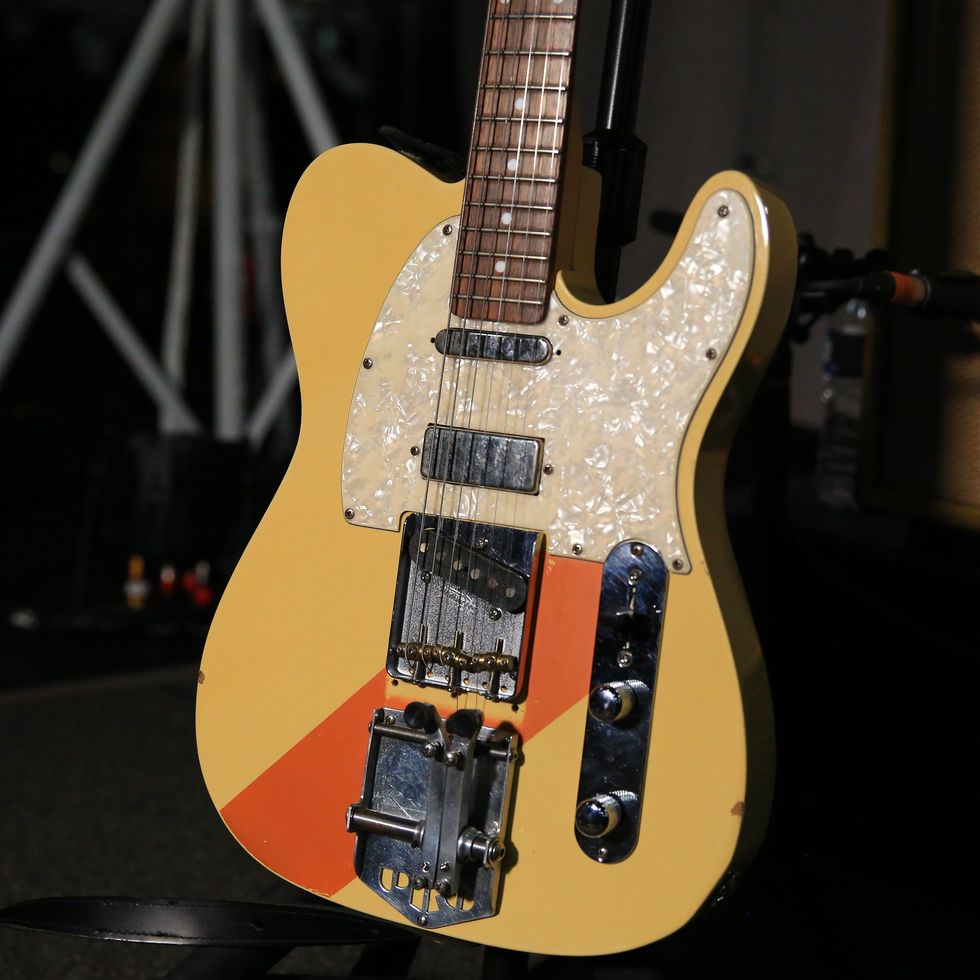
This Fender Squier Telecaster—property of Stuart Duncan—has a palm bender for a steel-like effect, and wears Ernie Ball M Steel 2915s, gauged .010–.052.
Brown Silver
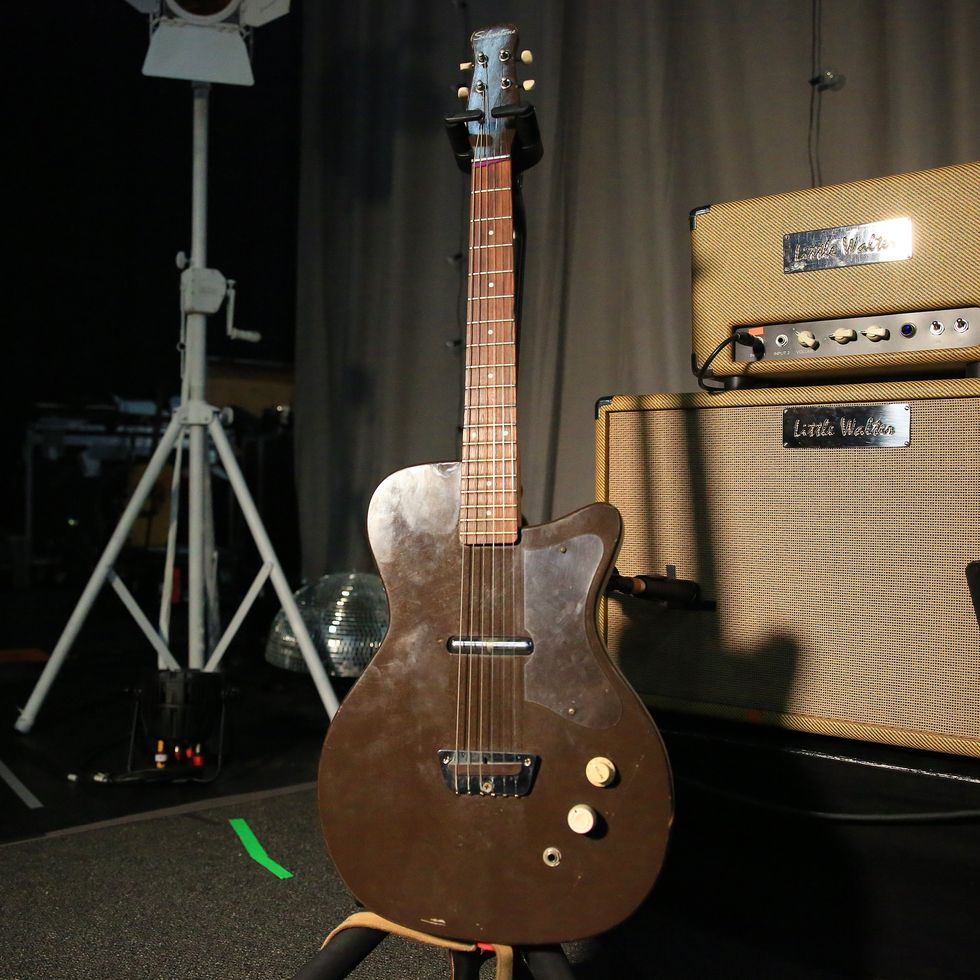
Duncan’s vintage Silvertone is strung with Ernie Ball Power Slinky nickelwound 2220 strings, gauged .011–.048.
Lil’ Git
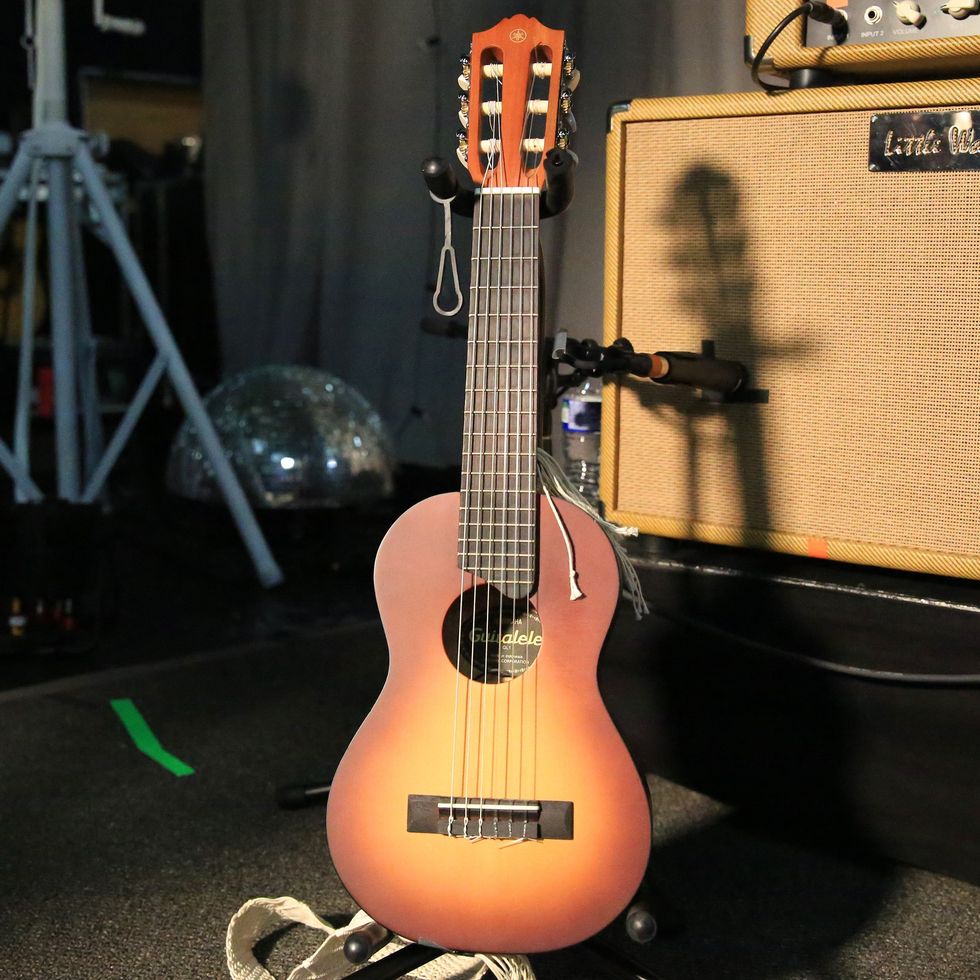
Stuart’s Yamaha Guitalele uses Ernie Ball Ernesto Palla 2403 classical-style guitar strings. Also in his acoustic line-up is a Gibson J-45 and a Martin D-28, which both take Ernie Ball Earthwood phosphor bronze strings.
The Giraffe
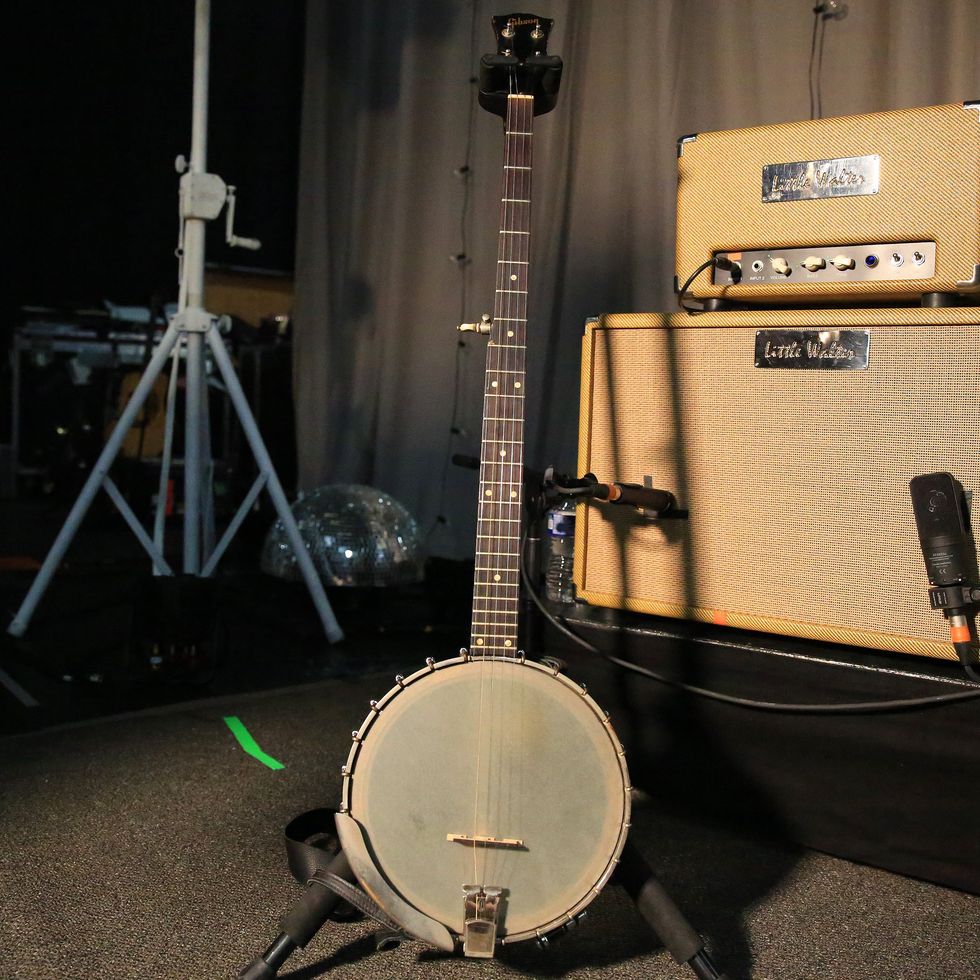
This Gibson long-neck banjo uses Ernie Ball 5-string Banjo Frailing strings gauged at .010–.024, with loop ends.
Resophonic Rouser
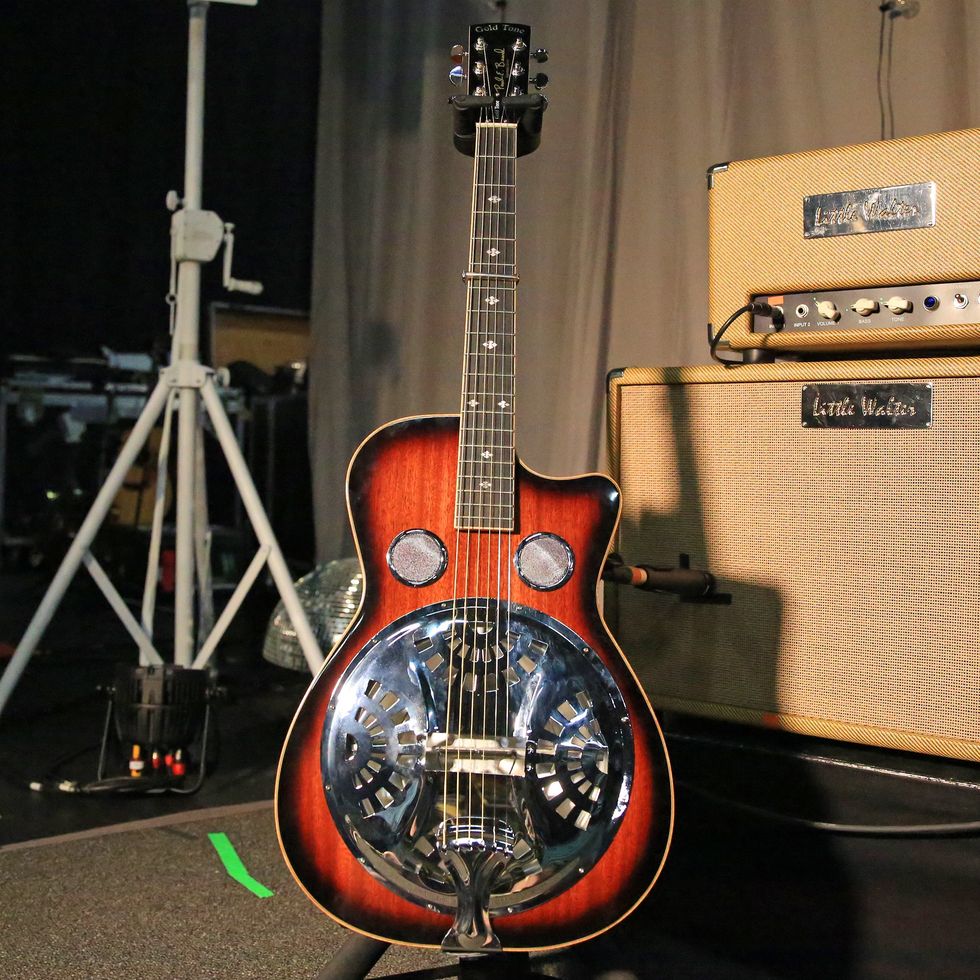
Duncan’s Gold Tone Paul Beard Signature Series Resonator wears Ernie Ball bronze-alloy Earthwood light acoustic strings.
Stuart Duncan's Pedalboard
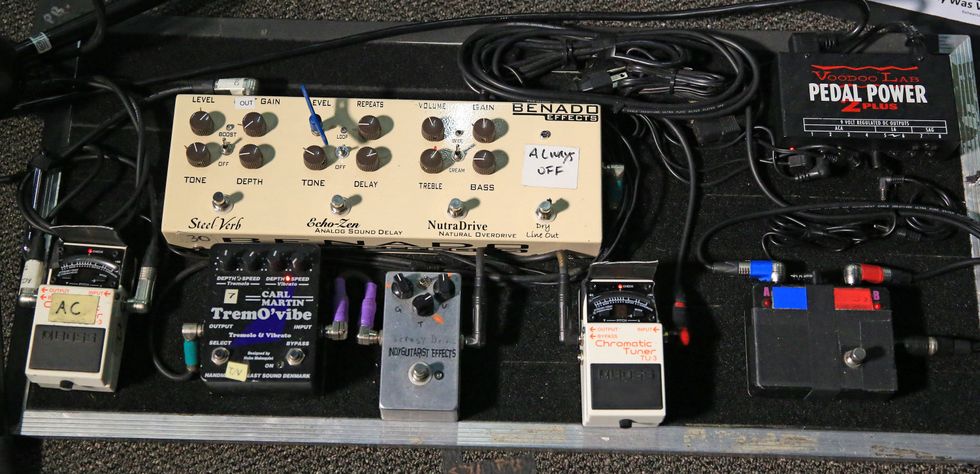
This comparatively stripped board does the job for Duncan. It’s got two Boss TU-3 tuners, an IndyGuitarist Effects custom OD, a Carl Martin TremO’vibe, and a Benado multi-effects with a Steel-Verb, Echo-Zen delay, and NutraDrive OD.
Tone Tools
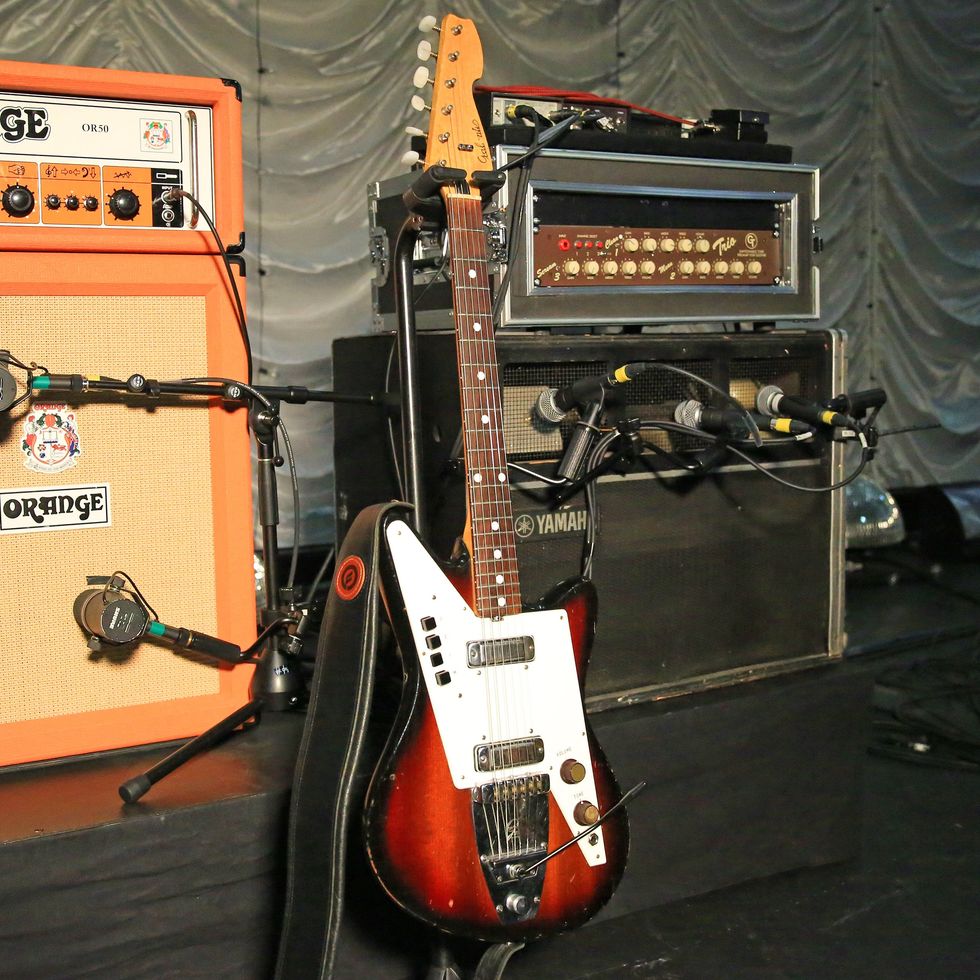
Victor Krauss has a distinctive sonic setup, since he covers both bass and guitar in the band. One of his main instruments is this 1967 Galanti Grand Prix.
Towers
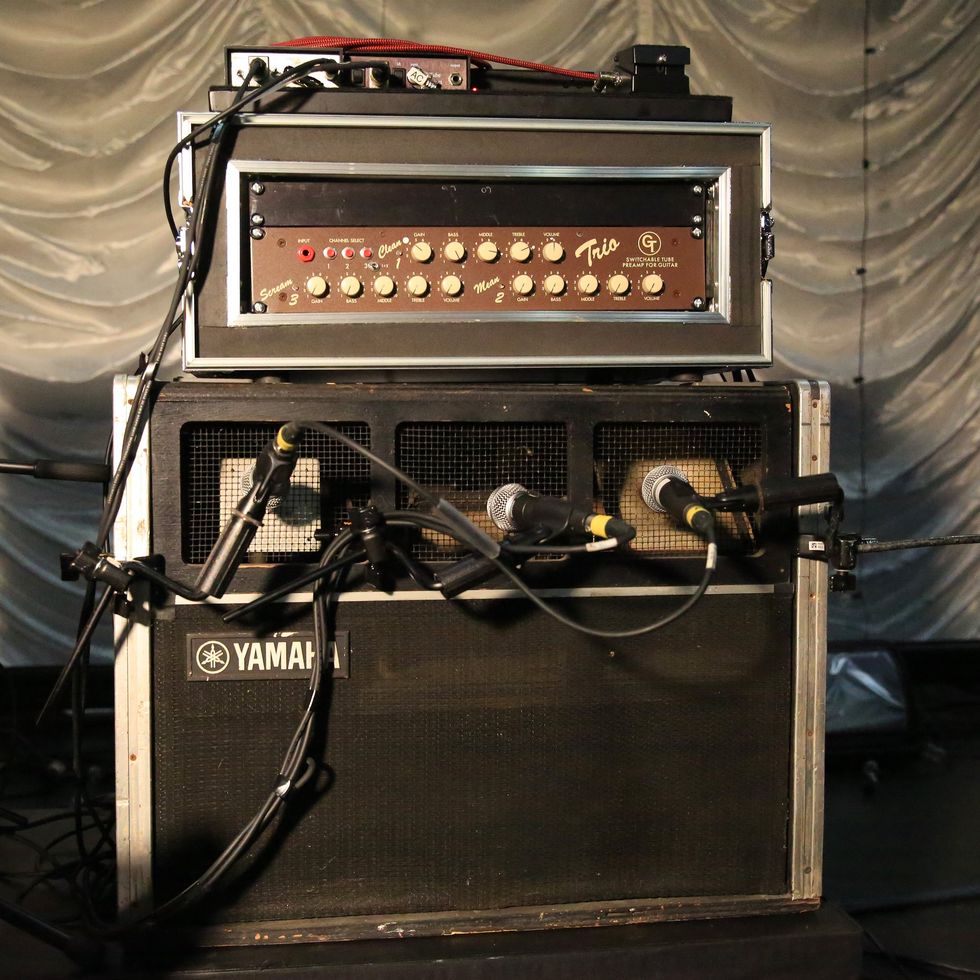
And a Yamaha RA-200R rotating speaker cabinet driven by a Groove Tubes GT Trio preamp.
Meet the
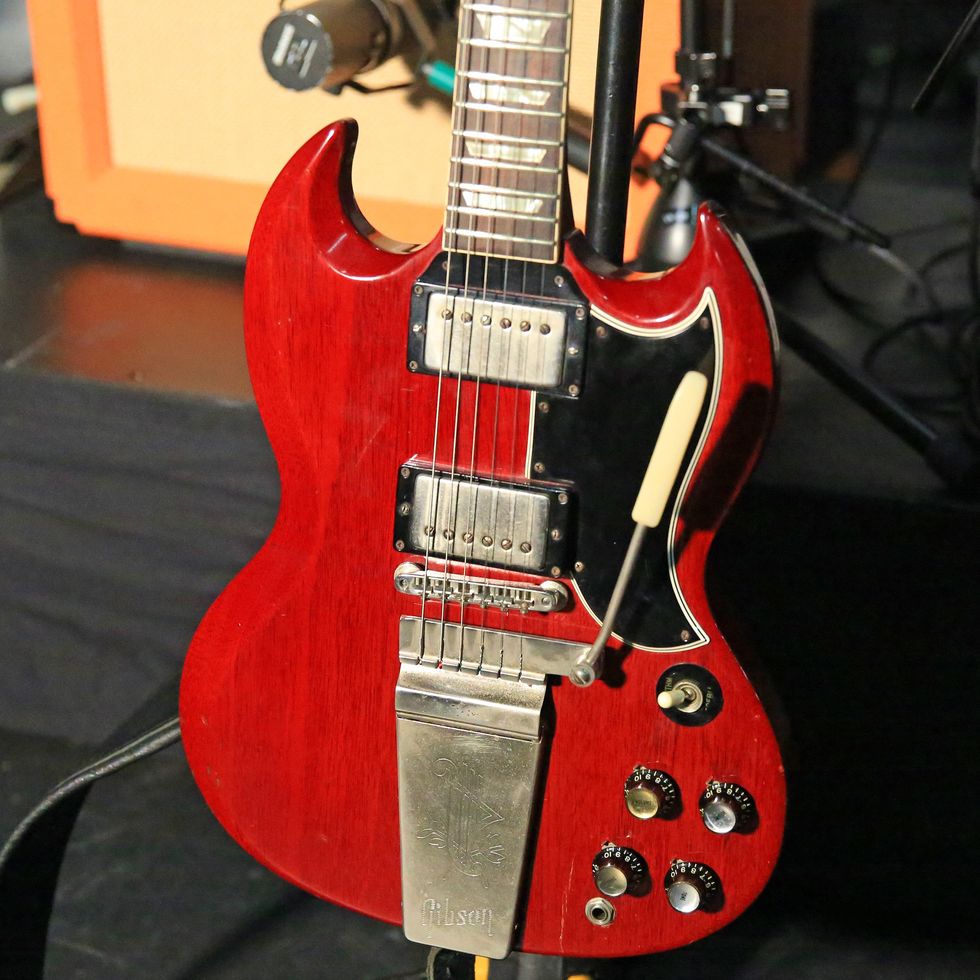
Here’s Krauss’ stock 1964 Gibson SG Standard.
Solid Guitars
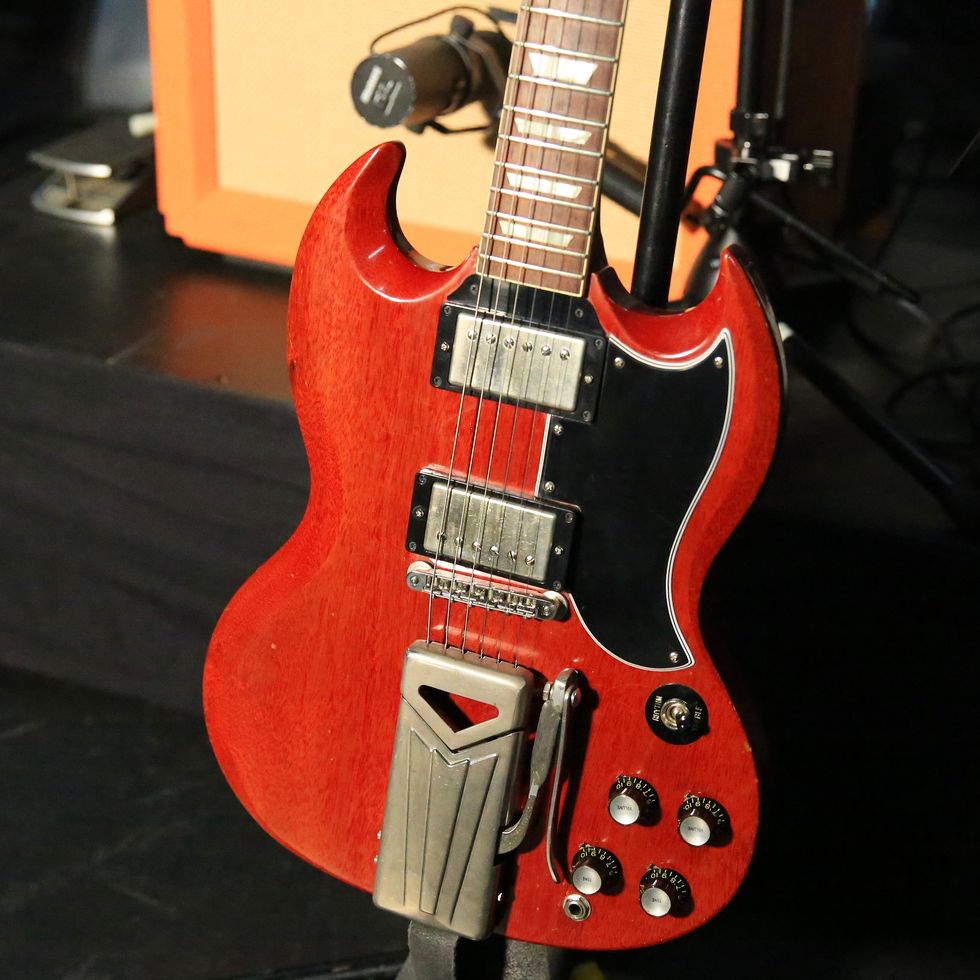
He also plays a high-mileage 1961 Gibson Les Paul—a double-cutaway from the era before this body design became tagged as the SG.
Get Shorty!
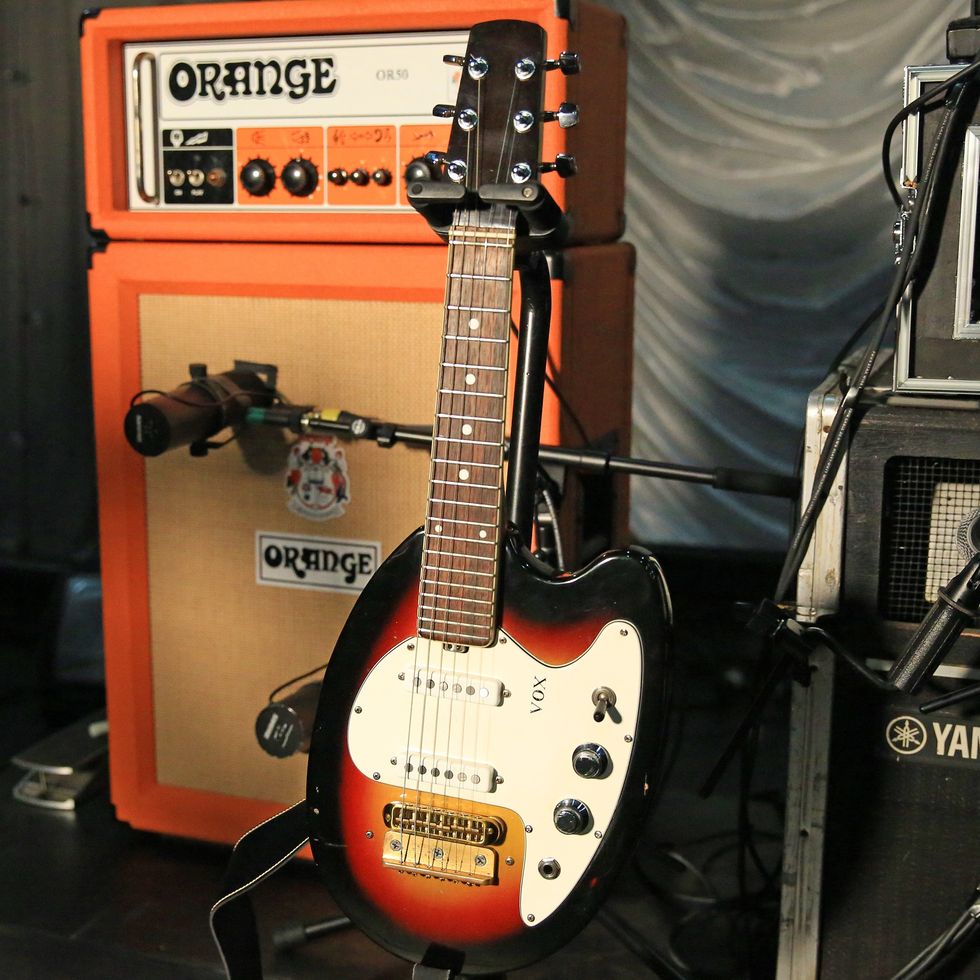
This ’60s Vox Octave 12—a short-scale instrument also called a mando-guitar—has been modified to a 6 string.
Dano Dancer
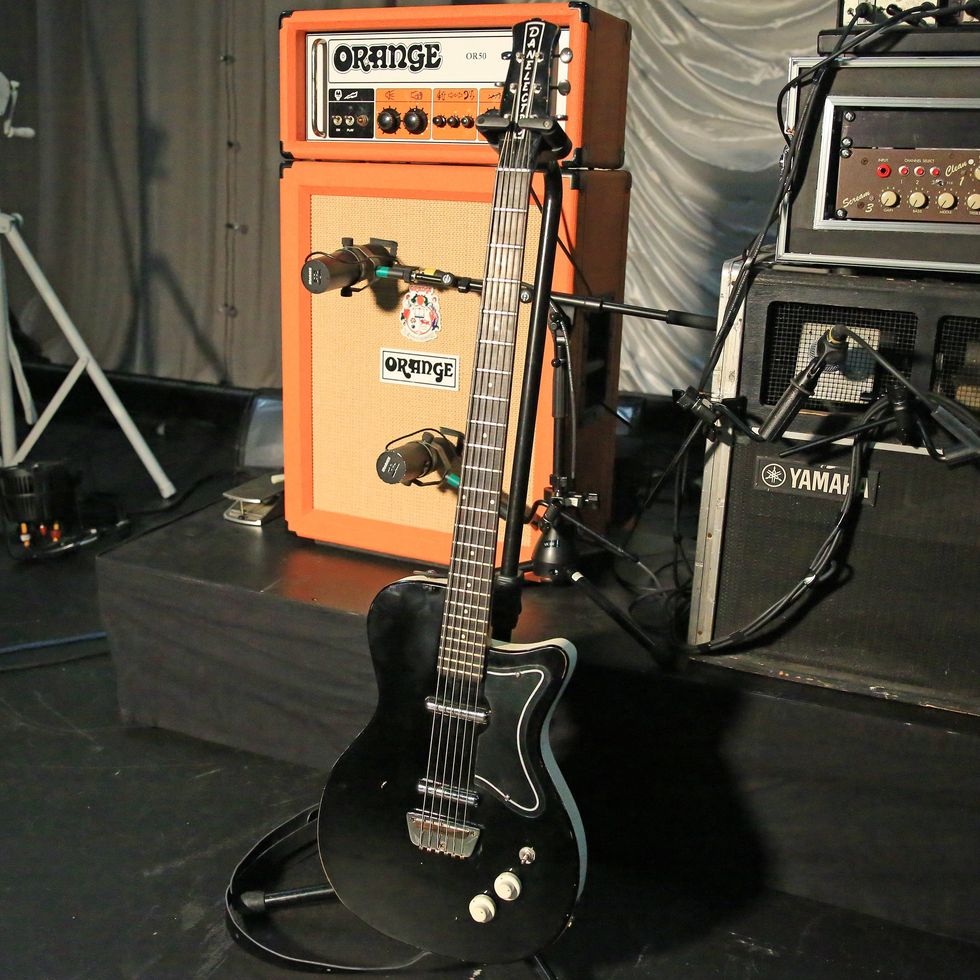
Among his other vintage instruments is a 1957 Danelectro UB-2 6-string bass that’s still stock.
Twang Thang
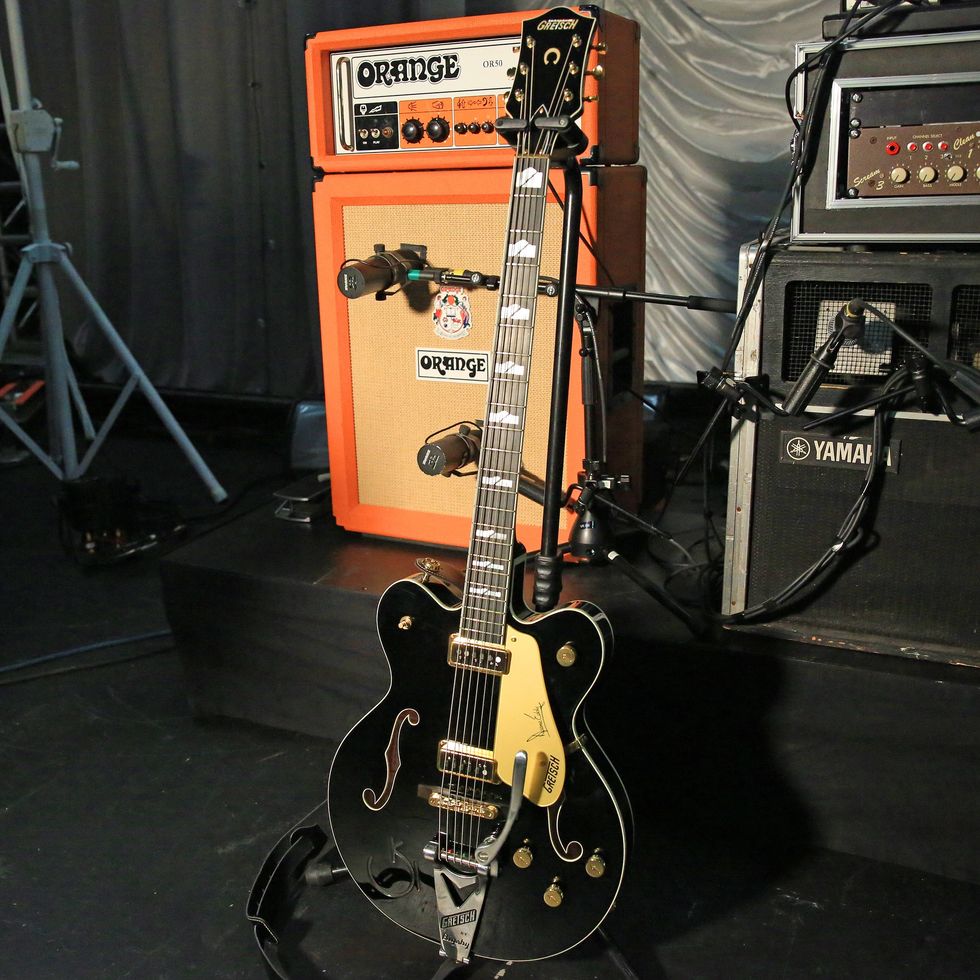
One of the few new axes in his arsenal is this 2022 Gretsch Duane Eddy Bass VI.
The Organic
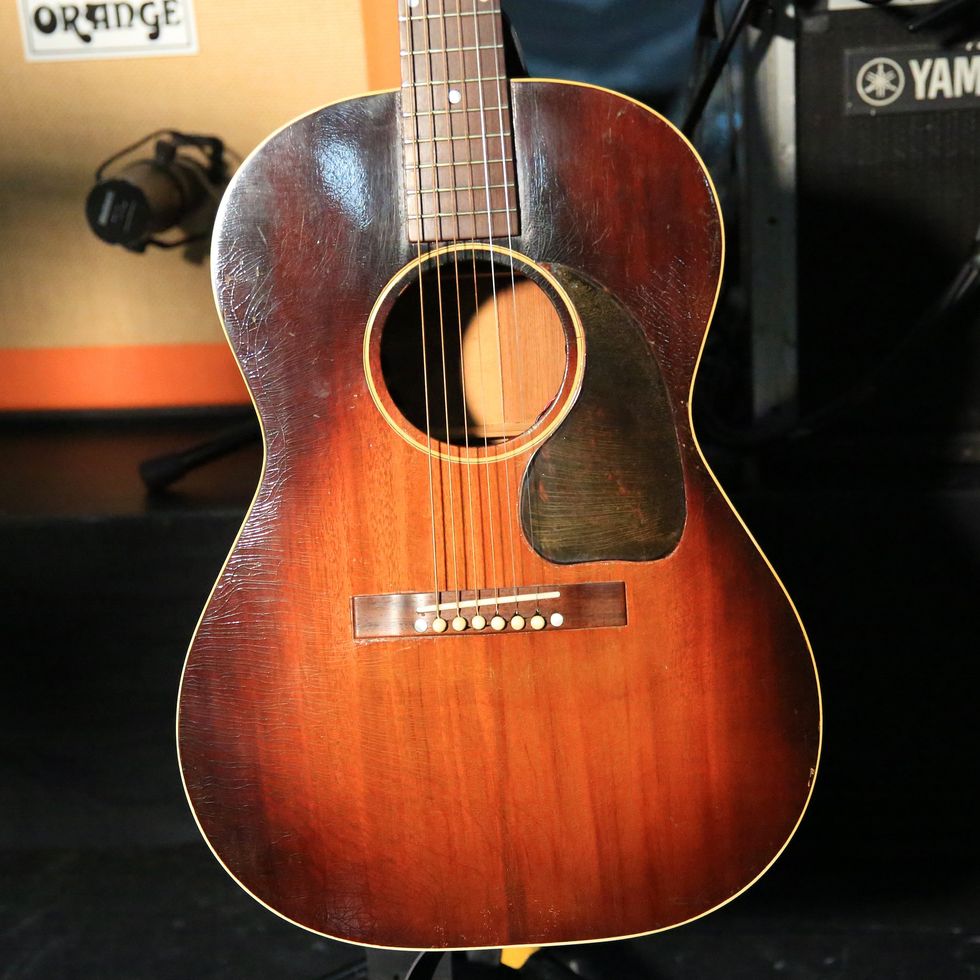
For acoustic, Kraus chases two options: this 1943 Gibson LG-2.
Fantastics
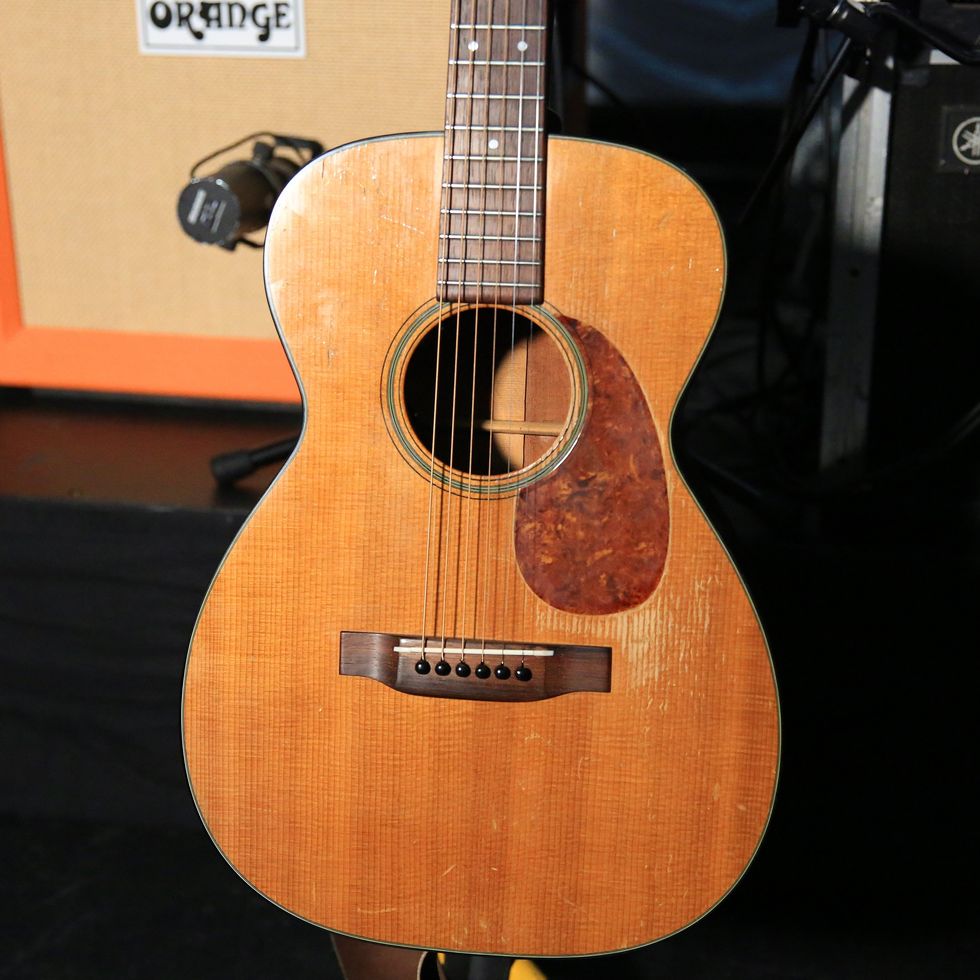
And the other is a velvety 1953 Martin 0-18.
Viktor Krauss' Pedalboard
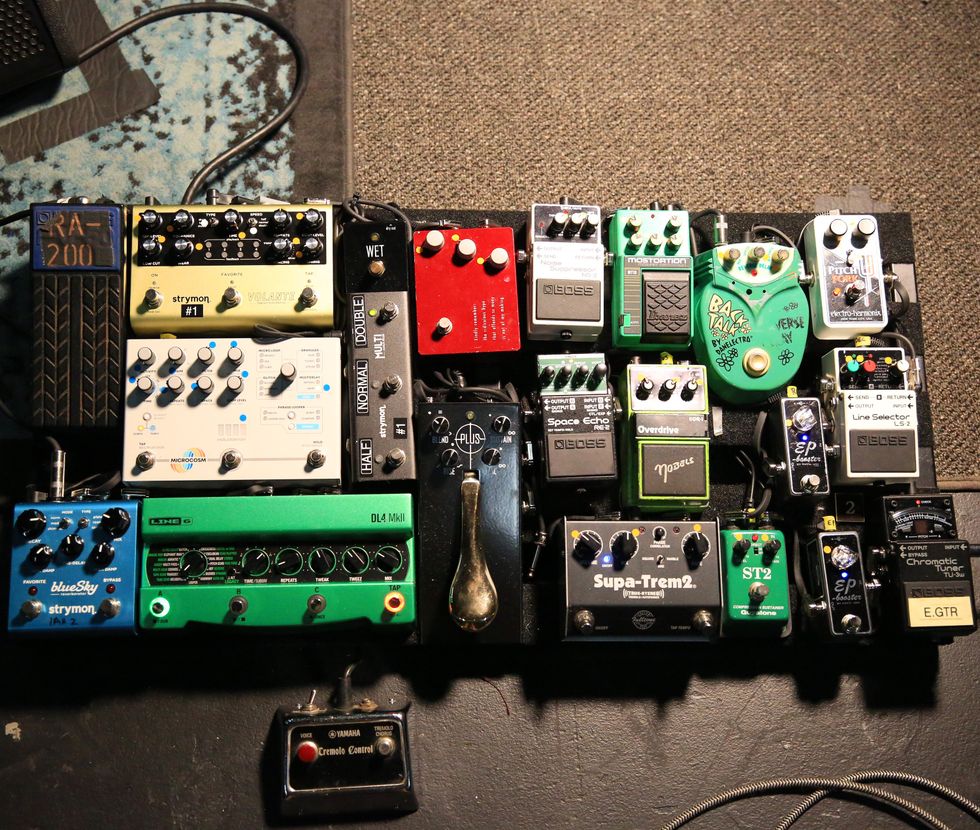
From his hands and instruments’ strings, the signal goes to a Boss TU-3W tuner, an Xotic EP Booster, a Guyatone ST2 compressor, another EP Booster, a Boss LS-2 Line Selector (with a send/return to an EHX Pitch Fork and a Danelectro Back Talk), a Nobles ODR-1, a Mostortion MT10, a Boss NS-2 Noise Suppressor, a Klon KTR, a Game Changer Audio Plus Sustain (controlling a Boss RE-2 Space Echo), a Fulltone Supa-Trem2, a Strymon Volante, a Hologram Microcosm Granular Looper & Glitch pedal, a Line 6 DL4 MkII delay, a Strymon blueSky, and an Ernie Ball volume pedal for the Yamaha RA-200R, another Strymon blueSky, and a Demeter VTDB-2B Tube DI for the Danelectro.
Pink Panther
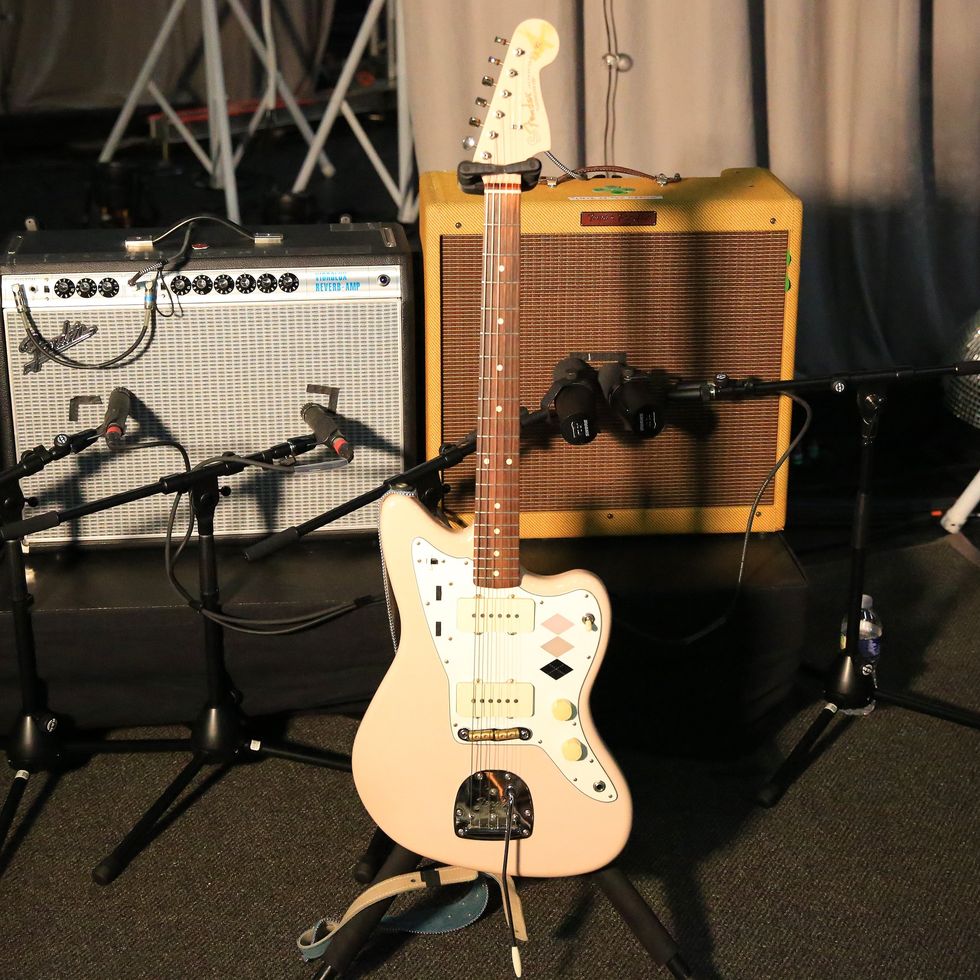
This Fender Jazzmaster features some custom work by guitar maker TK Smith and the Fender Custom Shop. All JD’s guitars are strung with D’Addarios.
Flex-Able Flyer
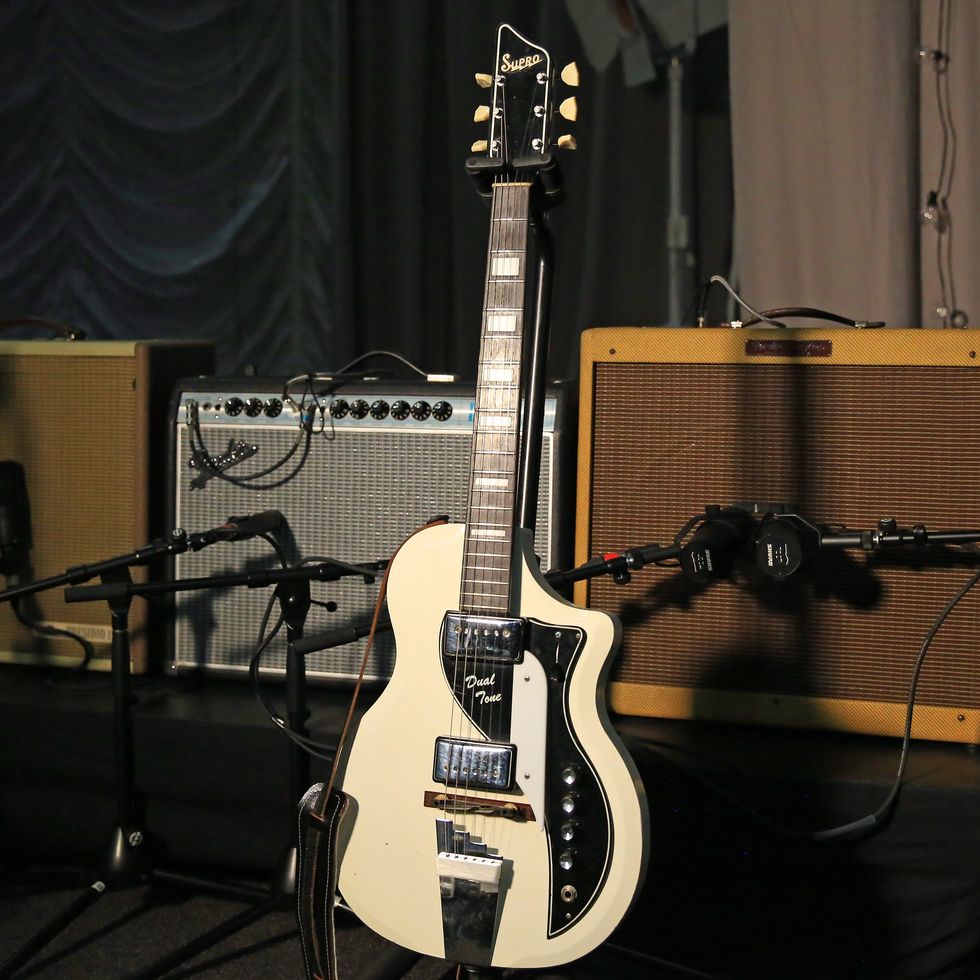
This Supro Dual Tone stays dropped down a half-step.
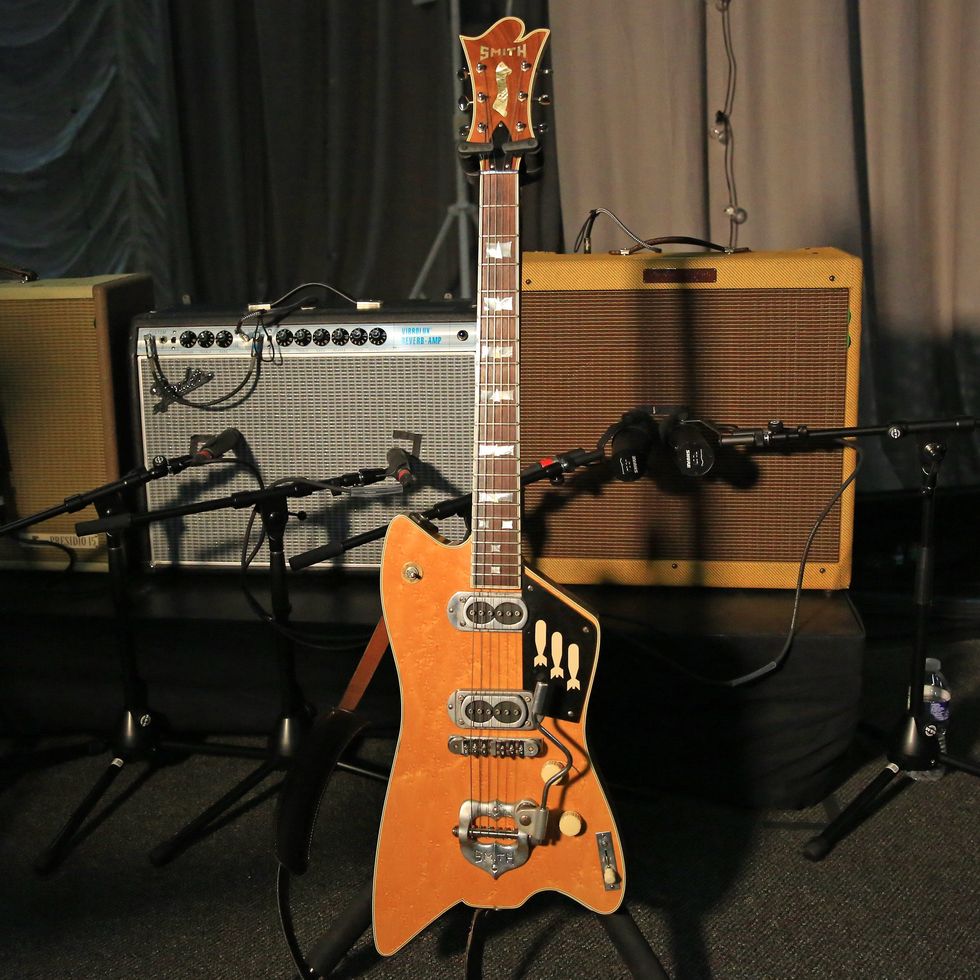
This custom TK Smith 6-string has long been one of McPherson’s favorites. Groove on those pickup covers and that whammy bar!
The Rest of the Best
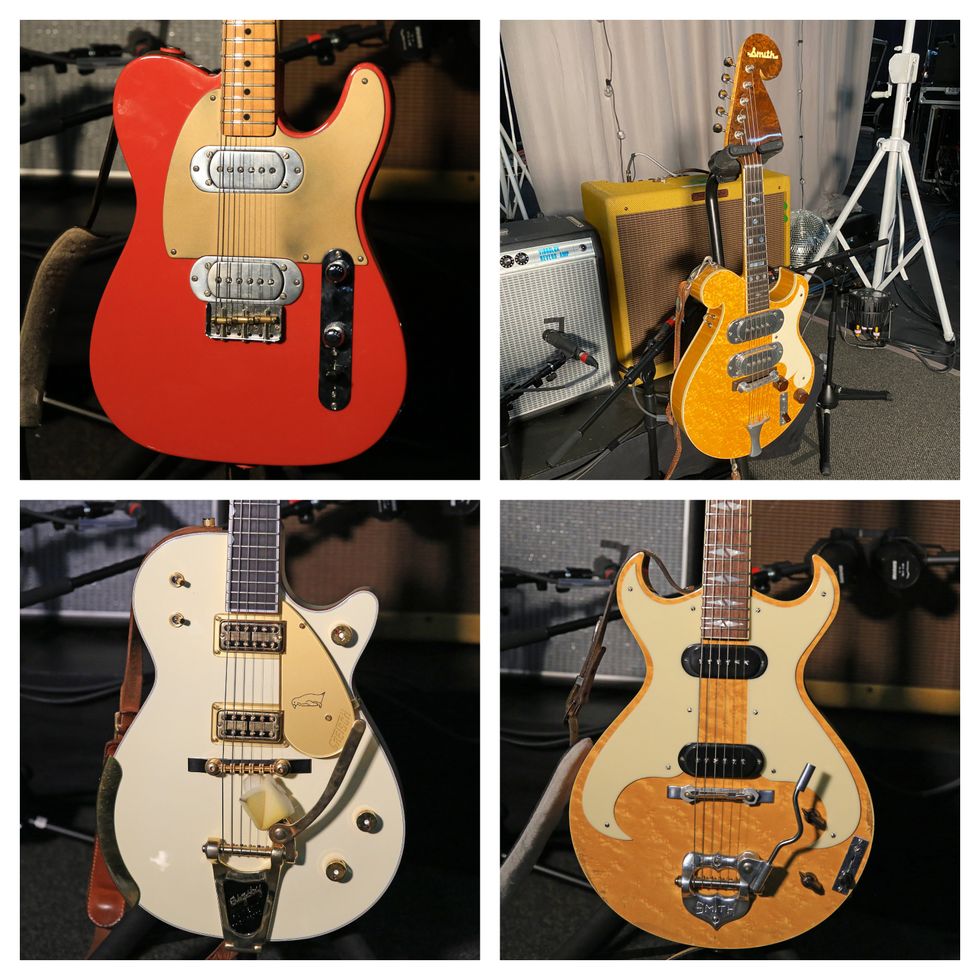
The remaining gunslingers in McPherson's holster including a Fender Custom Shop Tele, a Gretsch G6134T-58 Vintage Select '58 Penguin with Bigsby, and a pair of TK Smith creations (right side)
Amp Trinity
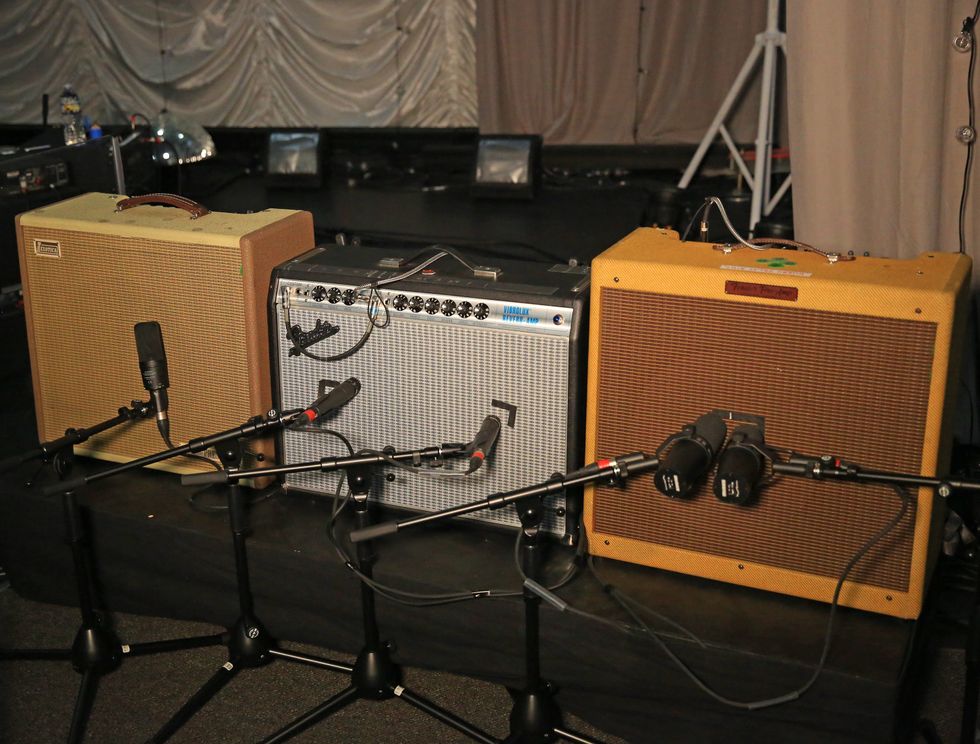
McPherson plays through a Fender tweed Pro-Amp reissue and a ’68 Vibrolux, while a Texotica Presidio 15 hangs in as a backup, but gets used as his main sound source when he does his own opening set.
JD McPherson's Pedalboard
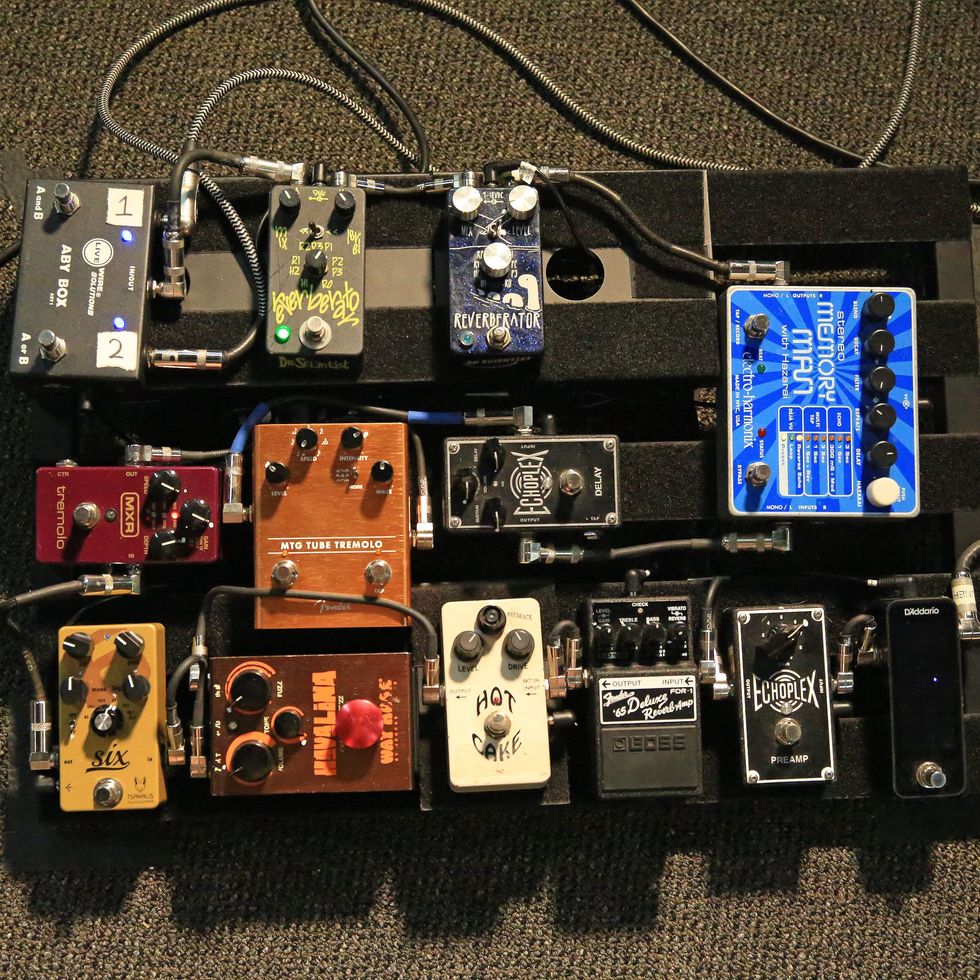
McPherson runs his guitars into a D’Addario tuner. From there, the signal hits an Echoplex preamp, a Fender ’65 Deluxe pedal, a Crowther Hot Cake, a Way Huge Havelina Fuzz, a Tsakalis AudioWorks Six, an MXR Tremolo, a Fender MTG Tube tremolo, an Echoplex delay, an EHX Stereo Memory Man with Hazarai, and a Dr. Scientist Reverberator and Reverberato—all into a Live Wire Solutions ABY box leading to JD’s amps.




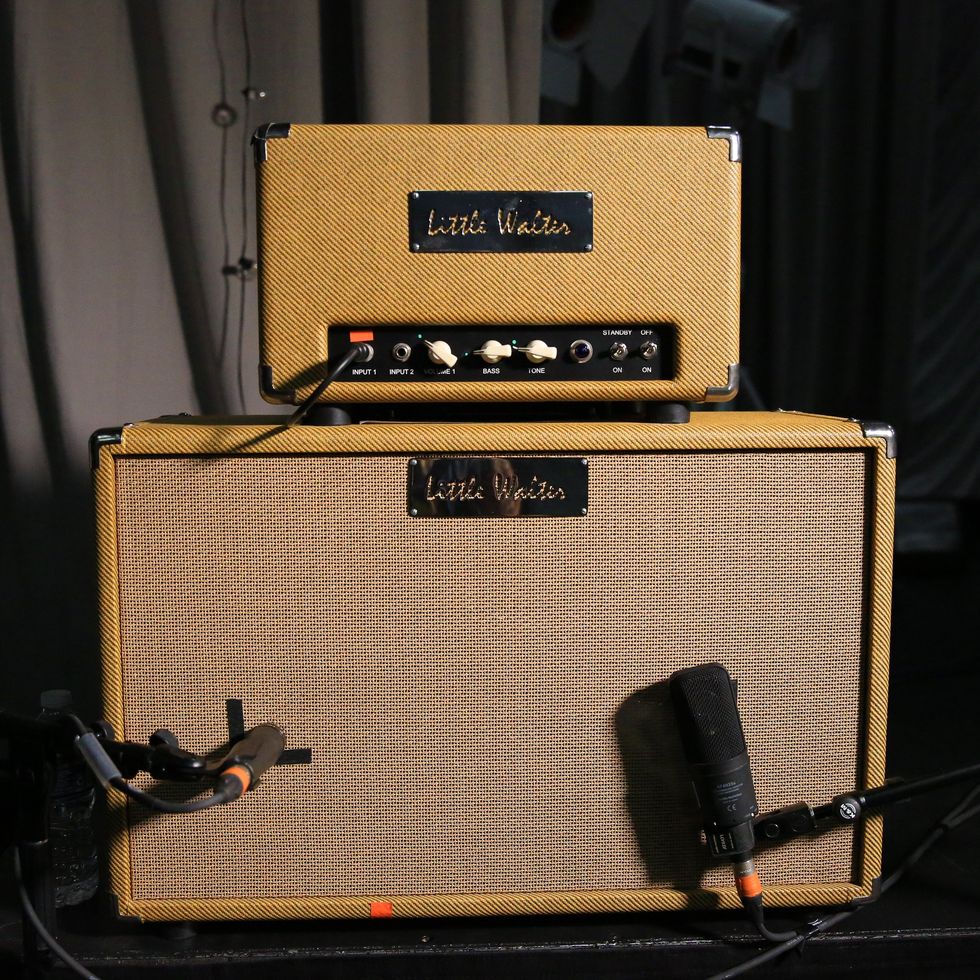

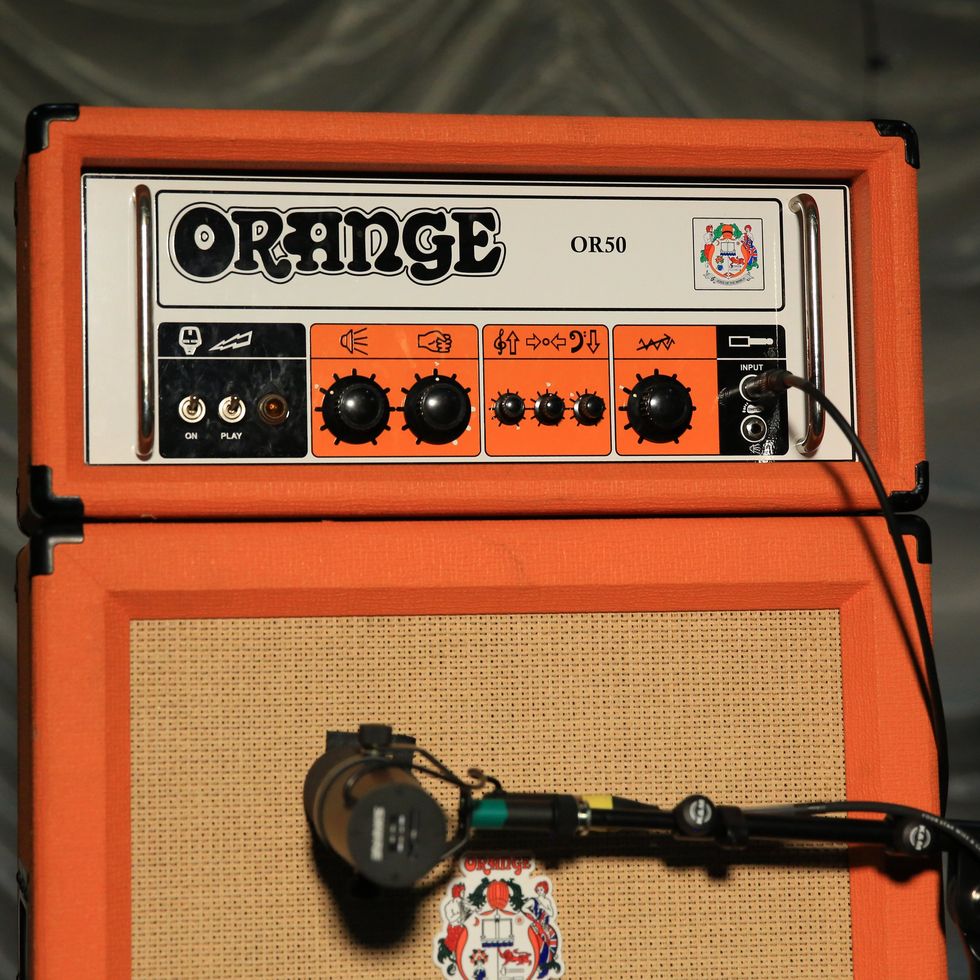

![Rig Rundown: Russian Circles’ Mike Sullivan [2025]](https://www.premierguitar.com/media-library/youtube.jpg?id=62303631&width=1245&height=700&quality=70&coordinates=0%2C0%2C0%2C0)



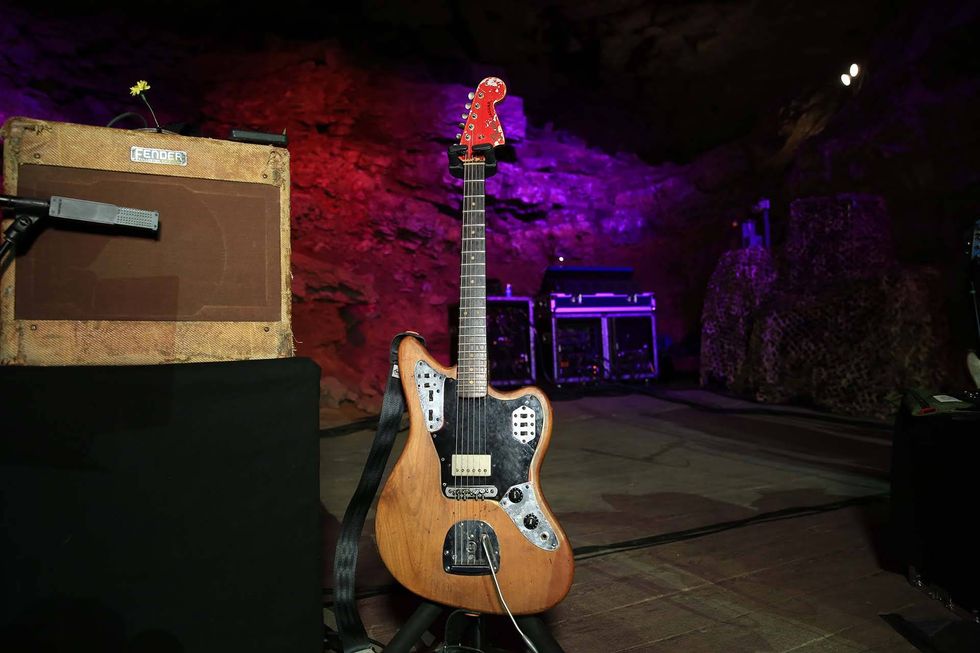
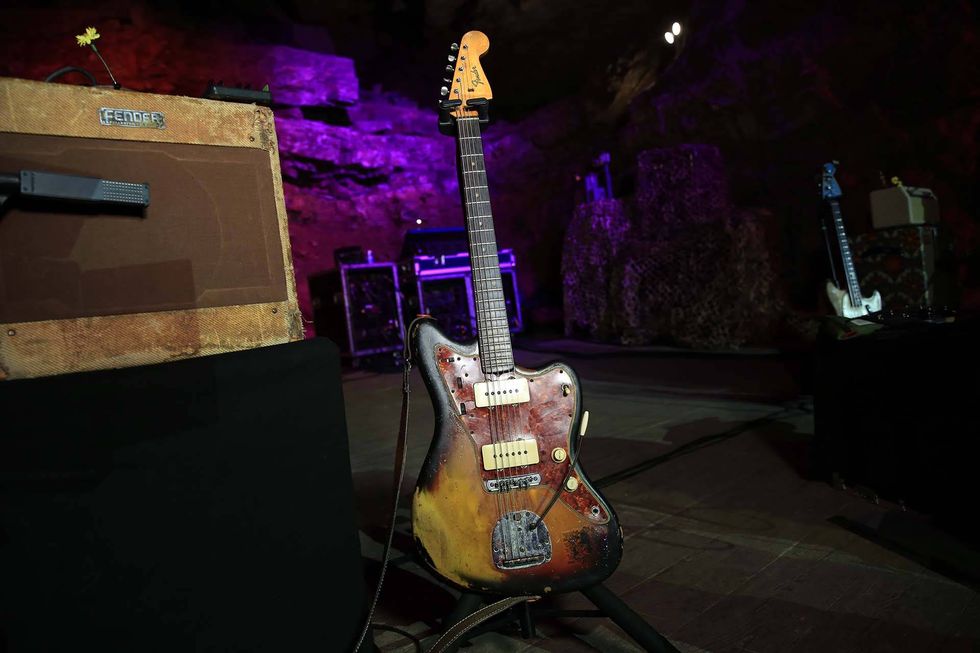
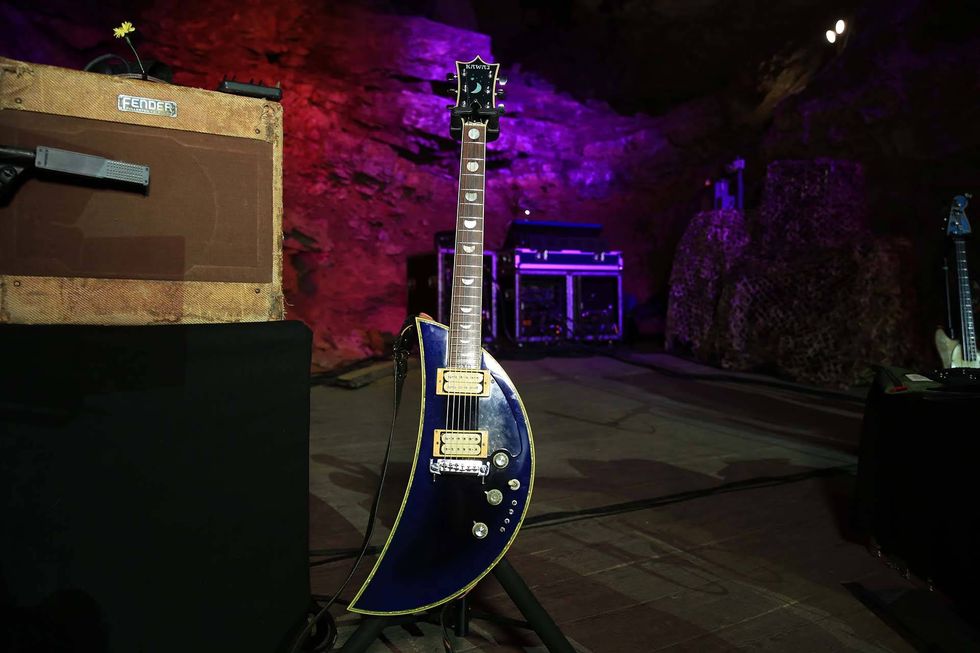


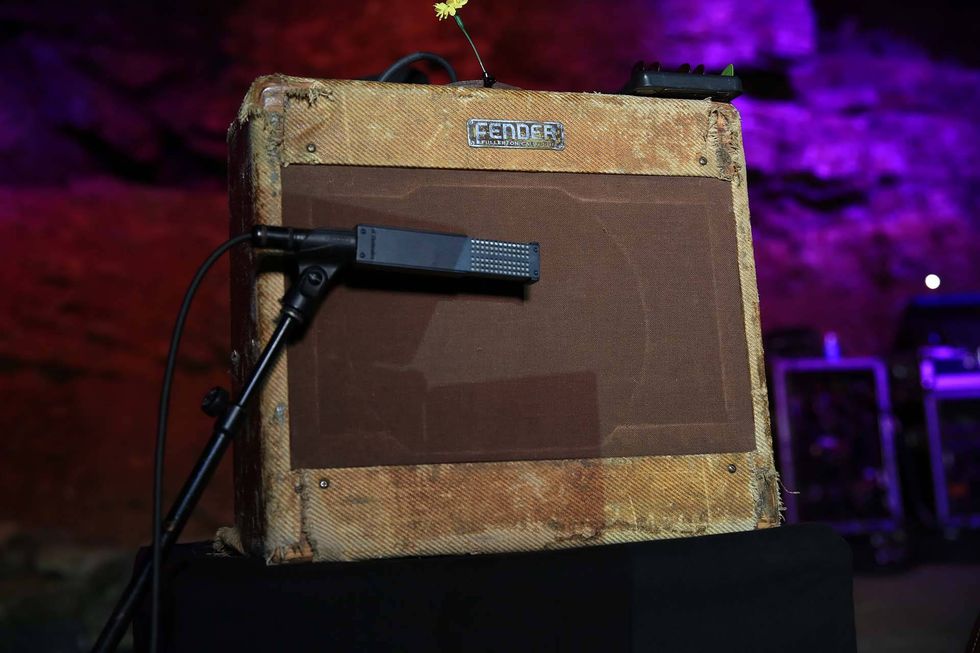
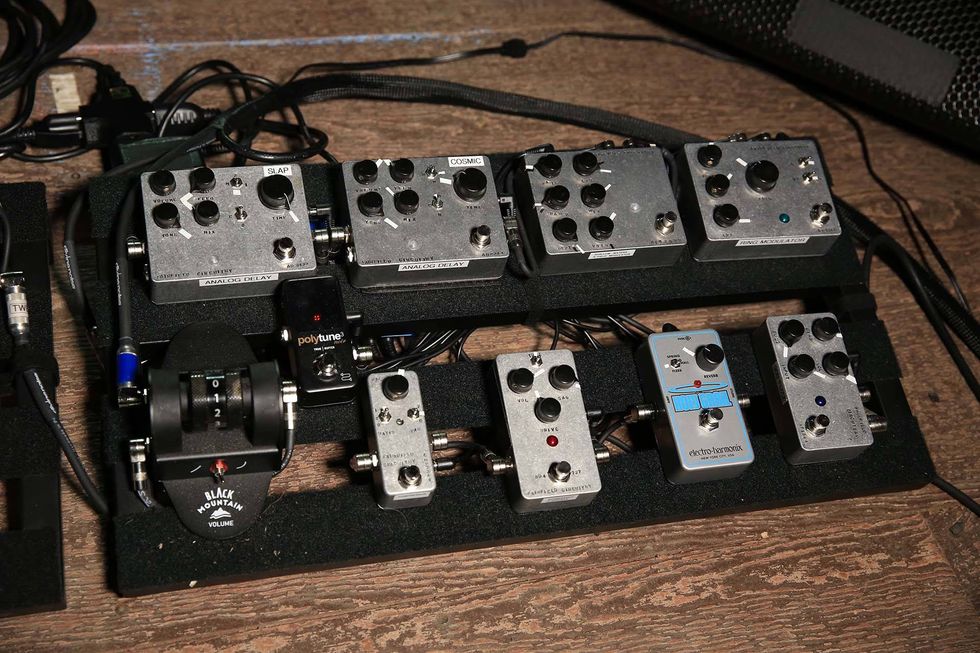



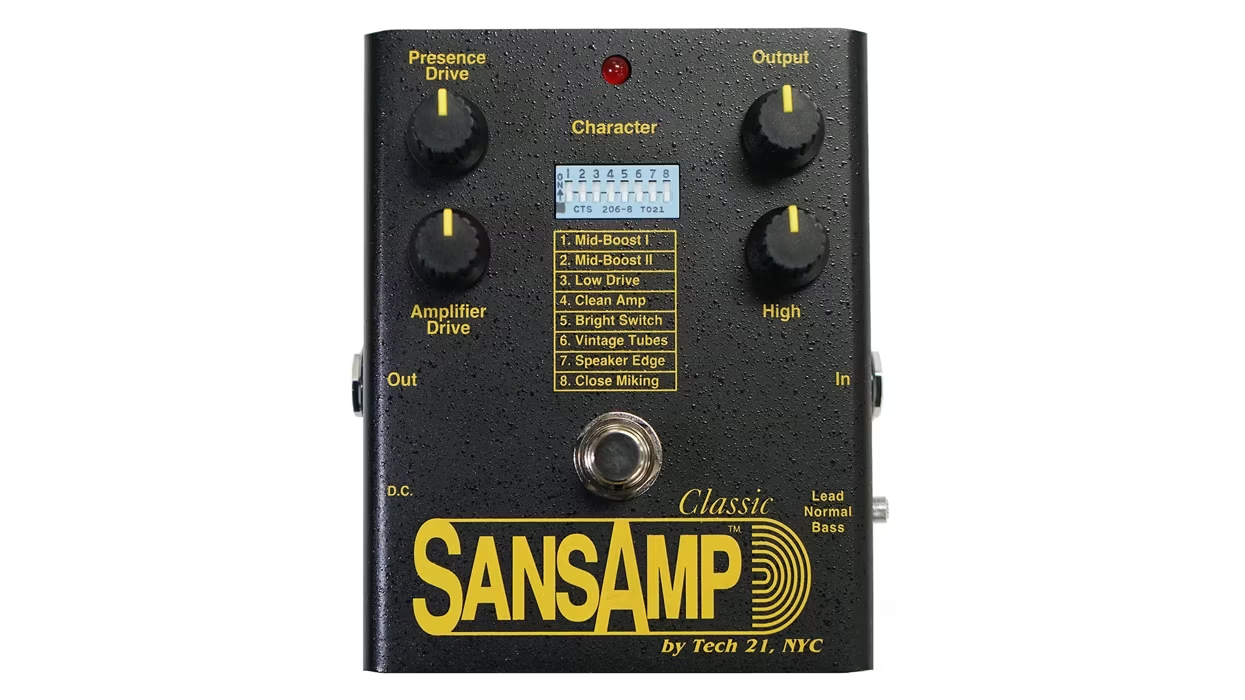

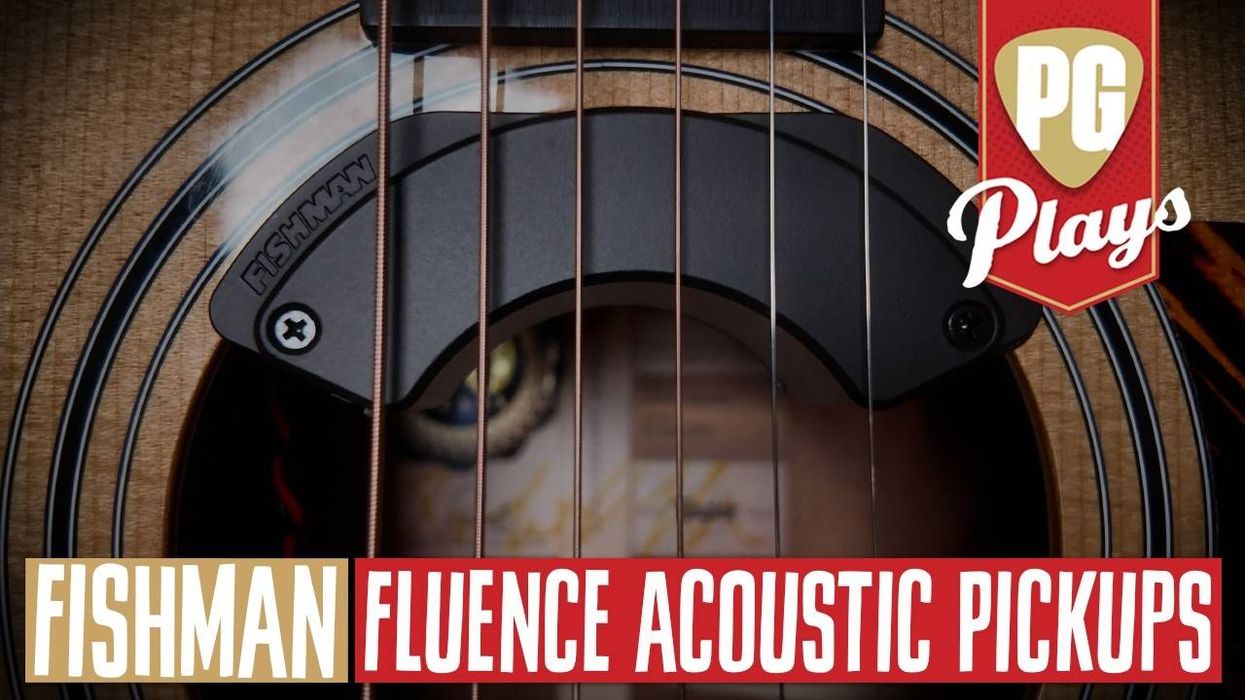

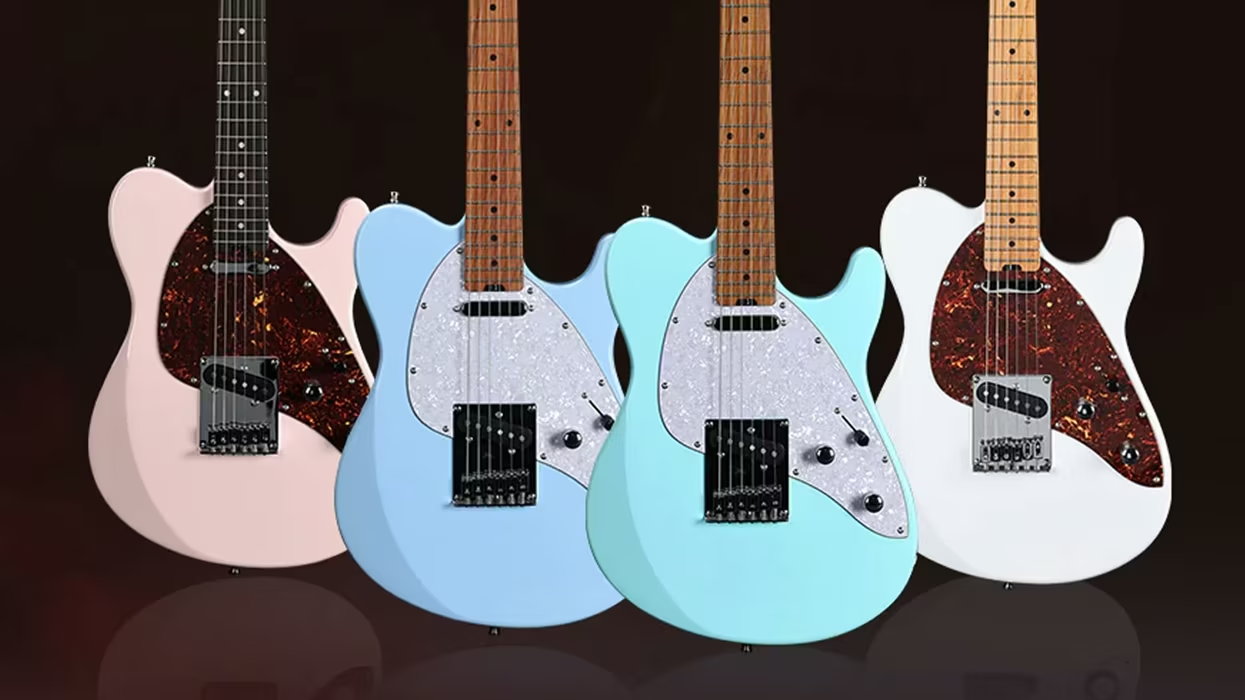

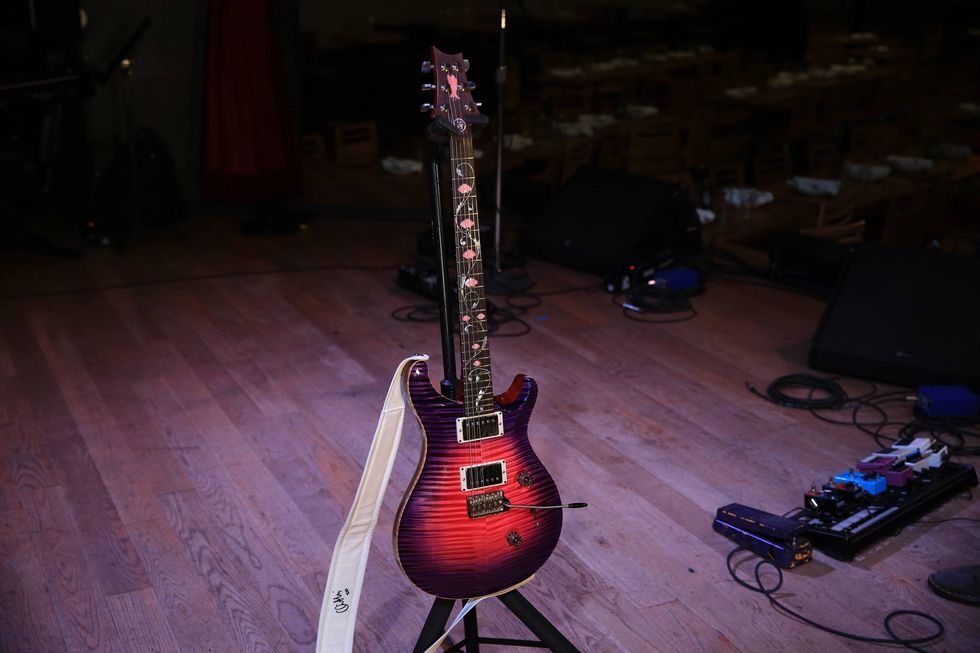
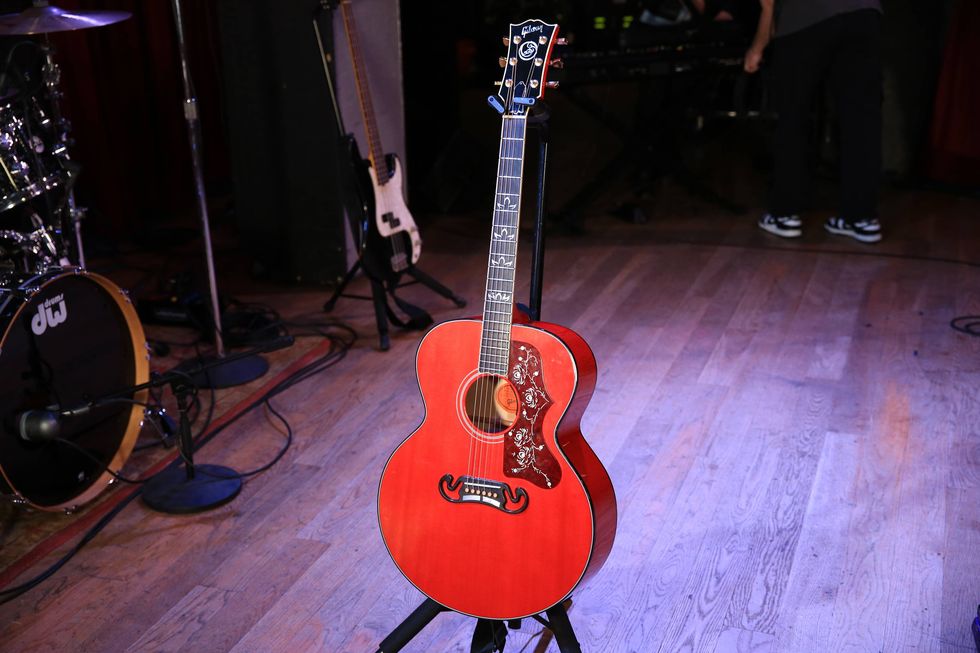
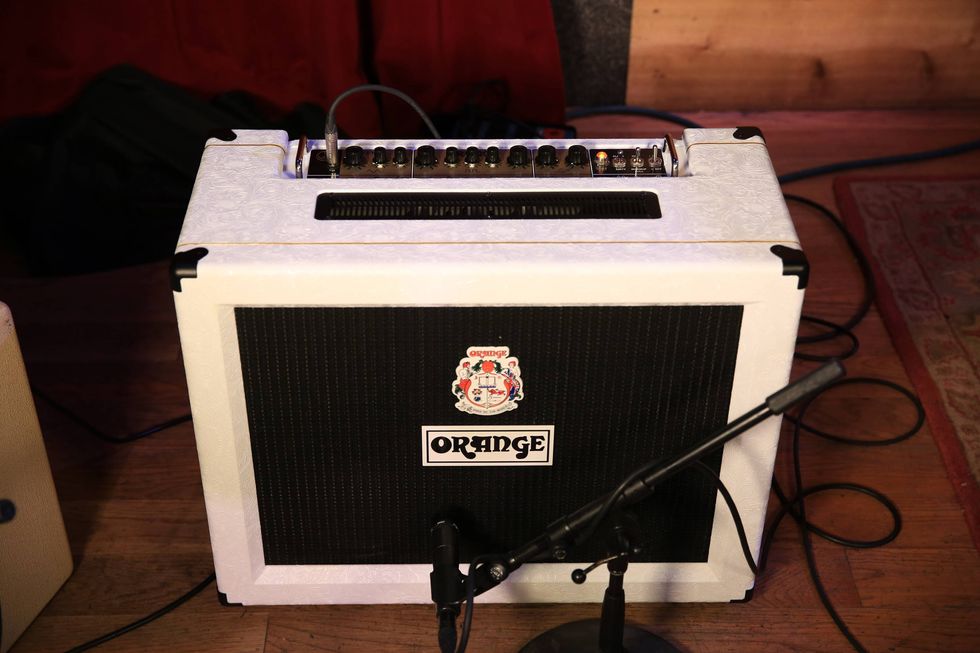
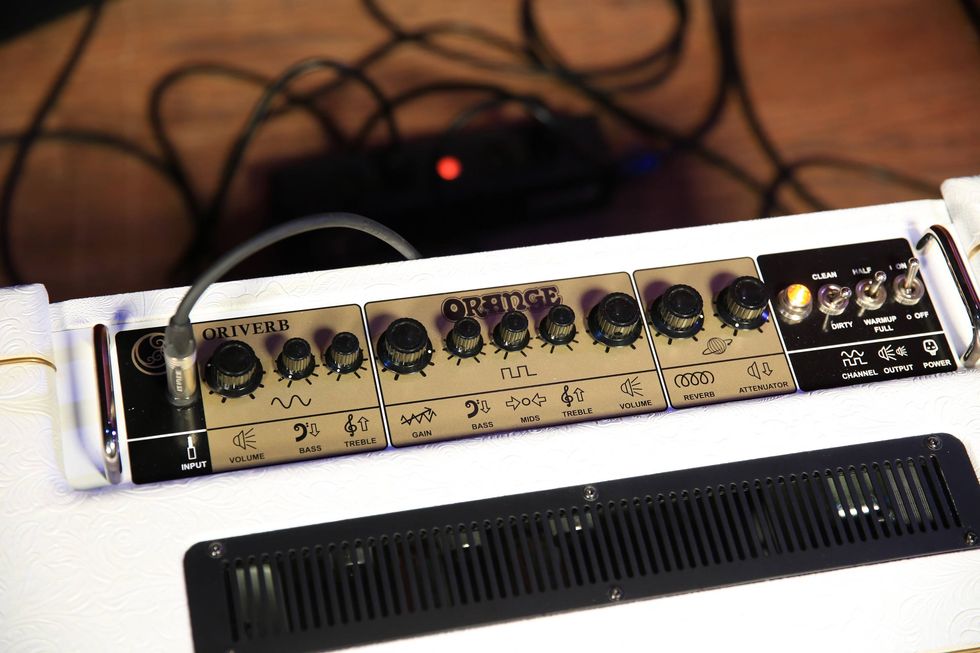
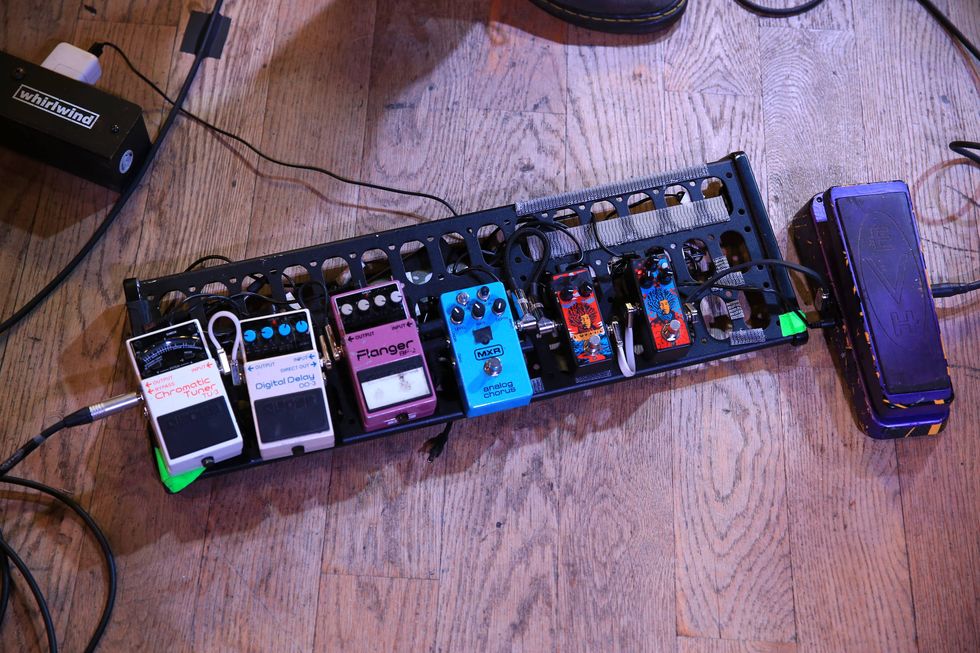

![Rig Rundown: AFI [2025]](https://www.premierguitar.com/media-library/youtube.jpg?id=62064741&width=1245&height=700&quality=70&coordinates=0%2C0%2C0%2C0)




















 Zach loves his Sovtek Mig 60 head, which he plays through a cab he built himself at a pipe-organ shop in Denver. Every glue joint is lined with thin leather for maximum air tightness, and it’s stocked with Celestion G12M Greenback speakers.
Zach loves his Sovtek Mig 60 head, which he plays through a cab he built himself at a pipe-organ shop in Denver. Every glue joint is lined with thin leather for maximum air tightness, and it’s stocked with Celestion G12M Greenback speakers.







